HAMILTON’S RESURGENCE
SPECIAL ISSUE: SPECIALISSUE: BUTLER,CLERMONT& WARRENCOUNTIES









The definitive guide to living well in Greater Cincinnati











The city’s most respected and award-winning magazine, highlighting the region’s most interesting people, cultural issues, food, arts, fashion, and history.






CINCINNATIMAGAZINE.COM SUBSCRIBE TODAY @CINCINNATIMAGAZINE
get up and GO METRO shopping TO




It’s time to break free from the hassles of traffic & parking and discover a new way to have fun…Metro!

Metro isn’t just for work anymore. Imagine riding in comfort to the hottest concerts, most exciting sporting events, best shopping sprees, and mouthwatering cafes and bars all over Cincinnati.

And with 24/7 service on seven of its most popular routes, expanded weekend service, more frequency & crosstown routes, and new buses with free Wi-Fi and charging ports, Metro makes it easy to leave your car at home and let the good times roll!



get up and GO METRO

Learn more at Go-Metro.com

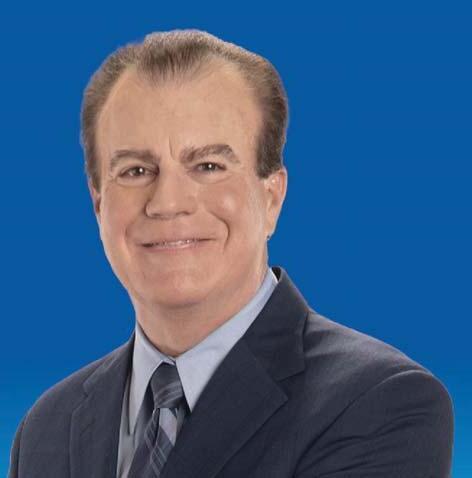































































































THE JUMP
10 PHILANTHROPY DRIVING CHANGE
The Northern Cincinnati Foundation eyes sustainablity and long-term vision for good.
12 CULTURE RIDING HIGH
The
14 MANUFACTURING FUELING THE FUTURE Hightowers Petroleum is innovating to


04 LETTER FROM BRENDON CULL
08 BY THE NUMBERS
Butler, Clermont, and Warren counties are an economic powerhouse for the Cincinnati region.
16 ECONOMIC DEVELOPMENT
18 TRANSPORTATION BLUE SKY IN MASON RYSE tests its electric flying vehicle while crowdfunding its future.
20 REAL ESTATE
A
BACK
DEEP DIVES
26 HAMILTON’S RESURGENCE IS SPOOKY STRONG
A new wave of employers is attracting development dollars to old manufacturing spaces across the city.
34
HEALTH CARE CLOSE TO HOME
Large hospital systems bring new technology and a prevention focus to where their patients live.

40 CAREER TECHNICAL EDUCATION IS VERY POPULAR Butler Tech partners with area businesses to expose high school students to better workforce development and college options.
C I N C I N N AT I U SA CINCINNATI USA R E G I O N A L C H A M B E R REGIONAL CHAMBER
PRESIDENT AND CEO Brendon Cull
CHIEF BUSINESS OFFICER Kate Ward
TRAFFIC MANAGER Tracey Brachle
BOARD CHAIR Candace McGraw
CEO, Cincinnati/Northern Kentucky International Airport
CHAMBER OFFICE
3 E. Fourth St. Cincinnati, OH 45202 (513) 579-3100
All contents © 202 3 Cincinnati USA Regional Chamber. The contents cannot be reproduced in any manner, whole or in part, without written permission from the Cincinnati USA Regional Chamber.
50 ASK ME ABOUT
Get to know Todd Martin of the Western & Southern Open, Steve Large of Miami University, and Brett Marcoux of Springer School and Center.
52 PHOTO ESSAY: PYRAMID HILL SCULPTURE PARK
Butler County’s 300-acre outdoor sculpture park is both larger than life and a hidden gem.

46 WHAT PUBLIC OFFICIALS ARE FOCUSED ON
Four elected officials discuss their legislative priorities for Butler and Warren counties.
FROM THE PUBLISHERS OF
PUBLISHER Ivy Bayer
EDITOR-IN-CHIEF John Fox
DIRECTOR OF EDITORIAL OPERATIONS
Amanda Boyd Walters
ASSOCIATE EDITOR Lauren Fisher
DESIGN DIRECTOR Brittany Dexter
ART DIRECTORS Carlie Burton, Jessica Dunham, Jen Kawanari, Emi Villavicencio
ADVERTISING DESIGNER Sophie Kallis
SENIOR ACCOUNT MANAGERS Maggie Goecke, Joe Hoffecker, Julie Poyer
ACCOUNT REPRESENTATIVE Laura Bowling
SENIOR MANAGER, SPONSORSHIP SALES

Chris Ohmer
PRODUCTION DIRECTOR Vu Luong
EDITORIAL AND ADVERTISING
Email cmletters@cincinnatimagazine.com
Website cincinnatimagazine.com
Phone (513) 421-4300
Subscriptions (800) 846-4333
FALL 2023 REALM 3 IMAGES BY (TOP) VAN SAIYON / (MIDDLE) BUTLER TECH/ (BOTTOM) MARLENE ROUNDS TABLE OF CONTENTS VOL.4, NO.3
PG. 40
PG. 52
annual Ohio Renaissance Festival expands in northern Warren County.
lead on renewable fuel.
HONDA JOLTS THE REGION A new joint venture car battery plant brings more next gen manufacturing.
BRINGING
MALL
Eastgate Mall changes hands and inches its redevelopment plans forward.
ON THE COVER: PHOTOGRAPH BY JUSTIN SCHAFER
18
PG.
incinnati is a big and diverse region. Three states, 15 counties, hundreds of local jurisdictions. There are so many stories of growth to tell—stories that will help you better understand how all the pieces fit together in this place we call home.

This fall issue of Realm is focused on the stories in three counties: Butler, Warren, and Clermont. They’re seeing tremendous growth of residents, jobs, and cultural vibrancy. From the Spooky Nook Sports complex in Hamilton to a revitalizing Eastgate Mall and from battery-powered cars to vertical takeoff aircraft, these northern counties are critical parts of our region’s growing economy.
I hope you take time to learn more about the growth stories in Butler, Warren, and Clermont counties, and I also urge you to help us think about the stories we can tell in your neck of the woods too. Realm is focused on the narrative of a growing, thriving region, and there’s much more to cover in the coming years.
We hope you are enjoying a beautiful autumn. Please stay in touch and let us know how we can help you and your business grow.
BRENDON CULL
BCull@cincinnatichamber.com
WELCOME
4 REALM FALL 2023 PHOTOGRAPH BY CHRIS VON HOLLE
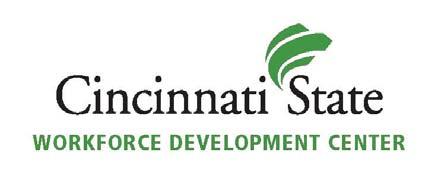
More than 33,000 square feet and over five unique spaces, including two outdoor patios, with direct access to the casino floor. Hard Rock can cater to any event, including cocktail parties, plated dinners for groups of 1,000, breakout sessions, conventions, and more!
More than 33,000 square feet and over five unique spaces, including two outdoor patios, with direct access to the casino floor. Hard Rock can cater to any event, including cocktail parties, plated dinners for groups of 1,000, breakout sessions, conventions, and more!















WHERE BUSINESS AND CASUAL
SETTING THE STAGE FOR THE ULTIMATE EVENT SCAN FOR INFORMATION AND THE BREAKOUT BROCHURE cincinnati MUST BE 21 OR OLDER TO GAMBLE. GAMBLING PROBLEM? CALL 1-800-589-9966. For Enquiries or Banquet Booking Call 513-250-3258 or email banquetsales@hrccincinnati.com
MEET
WHERE BUSINESS AND CASUAL MEET SETTING THE STAGE FOR THE ULTIMATE EVENT SCAN FOR INFORMATION AND THE BREAKOUT BROCHURE cincinnati MUST BE 21 OR OLDER TO GAMBLE. GAMBLING PROBLEM? CALL 1-800-589-9966. For Enquiries or Banquet Booking Call
513-250-3258 or email banquetsales@hrccincinnati.com

FALL 2023 REALM 7 PHOTOGRAPH BY CHECKMATE PHOTOGRAPHY Get a jump on news about flying vehicle development in Mason, new owners’ plans for Eastgate Mall, and how a joint Honda/LG car battery plant will impact the region’s economy. And catch up with Hightowers Petroleum and the Northern Cincinnati Foundation.
THE RENAISSANCE FESTIVAL EXPANDS ITS GROUNDS BY FIVE ACRES, VISITORS JUMP FOR JOY.
THE JUMP
Taken together, Butler, Clermont, and Warren counties are an economic powerhouse in the 16-county Cincinnati region. Our northern and eastern neighbors hold more than a third of the region’s population and about a third of its jobs, and unemployment is below the national average. Of those moving to the three counties, the vast majority are coming from Hamilton County. BUTLER/CLERMONT/WARREN
Increase in jobs in the three counties 2017-2022
TRANSPORTATION AND WAREHOUSING
FASTEST GROWING INDUSTRIES 5,405
MANUFACTURING
CONSTRUCTION
MANAGEMENT OF COMPANIES AND ENTERPRISES
PROFESSIONAL, SCIENTIFIC, AND TECHNICAL SERVICE
TOTAL
EMPLOYMENT
TOP EMPLOYMENT BY ZIP CODE 45040 (MASON, WARREN COUNTY) ................... 39,350 45069 (WEST CHESTER, BUTLER COUNTY) ........ 39,028 45011 (HAMILTON, BUTLER COUNTY) .................. 30,397 45014 (FAIRFIELD, BUTLER COUNTY) ................ 30,241 45036 (LEBANON, WARREN COUNTY) ................. 23,061 UNEMPLOYMENT
BUTLER/CLERMONT/WARREN
THE JUMP 8 REALM FALL 2023
1,826 1,005
2,796 2,071
Statistics provided by the Cincinnati USA Regional Chamber’s Center for Research & Data. All data is from 2022 unless noted and is sourced from Lightcast.
COUNTIES:
37.5% OF THE REGION’S POPULATION Note: Population grew by 41,714 over the previous five years and is projected to grow by 42,852 over the next five years. Where new residents moved from in 2020 HAMILTON COUNTY 13,397 MONTGOMERY COUNTY 3,618 BROWN COUNTY 946 GREENE COUNTY 631 FRANKLIN COUNTY, COLUMBUS 604 BROWN CLERMONT HAMILTON BUTLER WARREN GREENE MONTGOMERY MOVING TO THE COUNTIES TOTAL POPULATION COLLEGE DEGREES
856,213
Percentage of the population aged 25 and older with a bachelor’s degree or higher level of education BUTLER/CLERMONT/WARREN
COUNTIES: 347,163
31.9% OF THE REGION’S JOBS
UNEMPLOYMENT (APRIL 2023):
NATIONAL UNEMPLOYMENT:
EMPLOYMENT
Note: Jobs grew by 8,983 over the previous five years and are projected to grow by 17,713 over the next five years.
2.7%
3.1%
BUTLER/CLERMONT/ WARREN
FRANKLIN 2,79 6 1, 826
35.7%
COUNTIES 30.7% STATE OF OHIO
















LONDON JUST GOT A WHOLE LOT CLOSER Now flying nonstop Cincinnati to London Book your very British trip at ba.com today
DRIVING CHANGE UP NORTH
The Northern Cincinnati Foundation (NCF), which uses philanthropy to connect people and causes to create positive change, was founded in 1999 by a group of women known as the Kitchen Table Board. Initial efforts focused on fundraising for cancer research and donating to various causes in northern Cincinnati communities.
After evolving into the grassroots organization it is today, NCF is a testament to the power of community engagement and the ripple effect of giving, says Executive Director Erin Satzger. Her journey with the foundation has been more than a career—it’s a lifelong commitment that started when her mother was on the original Kitchen Table Board. “I grew up helping and volunteering for the foundation when it was first started,” says Satzger. “I still remember there was this really bad fire in the community around Christmas time. I was very young, and mom put me in the car to go help get toys and furniture in a warehouse. And I remember thinking that was so profound—I was happy to help, and so was my sister. We were just born into philanthropy.”
Knowing that nearly half of all nonprofits fail within their first 10 years, Satzger’s goal is to help NCF beneficiaries focus on sustainability. The total charitable assets under its management has grown 71 percent since 2018 to nearly $25 million, with 75 percent of those assets endowed and available in perpetuity. “We really want to help make other nonprofits sustainable,” she says. “We make sure we’re good stewards by showing them how to thrive not only today but 100 years from now, so they can serve the same cause and have the same impact.”
NCF is also focused on addressing critical need areas identified through a needs assessment; the top areas include leading literacy for kids kindergarten through third grade, workforce development, and transportation. Two of the foundation’s many success stories are the EDGE Teen Center, which helps children engage in positive activities and behaviors, and Reach Out Lakota, serving families in need. “It’s important that every community has some access to a food pantry because people fall on hard times and need help,” says Satzger. “We’re really proud of them. They’re building quite a robust endowment and working on their long-term plan.”
The foundation also launched a podcast called What Gives, featuring conversations with business leaders and community builders discussing how business and philanthropy work hand-in-hand. Well-known guests include Cincinnati Reds owner Bob Castellini and Josh Heuser, owner of AGAR marketing firm and Ghost Baby bar in Over-the-Rhine.
Satzger says NCF will continue to build endowments for area nonprofits and to help northern communities in need. “I find that the Cincinnati community is so generous with so many causes,” says Satzger. “We’re blessed at Northern Cincinnati Foundation to be working with so many great business owners, families, individual fund holders, and nonprofits that want to do good.”
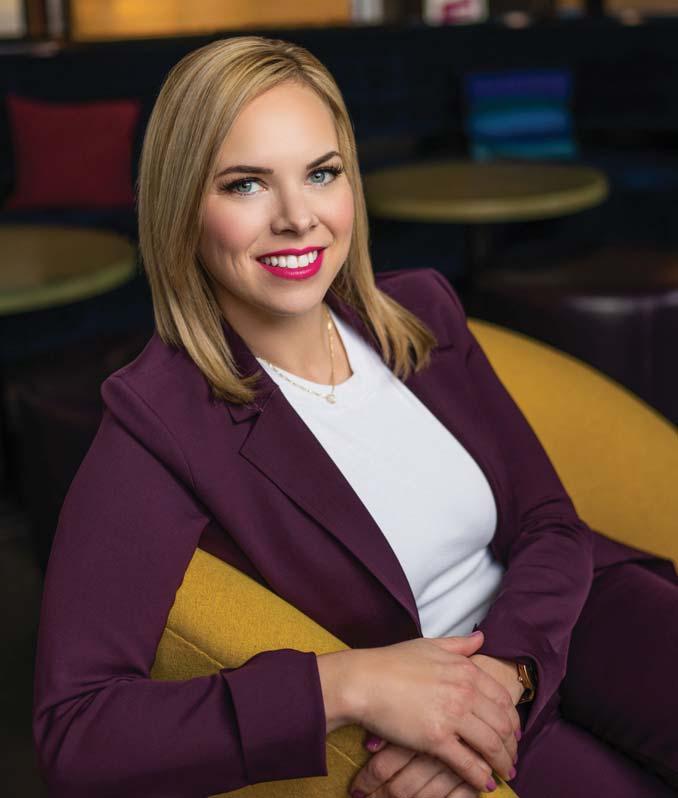
THE JUMP 10 REALM FALL 2023 PHOTOGRAPH COURTESY NORTHERN CINCINNATI FOUNDATION
The Northern Cincinnati Foundation eyes sustainability and long-term vision for good.
–SARAH M. MULLINS
PHILANTHROPY
Building a Reputation in Innovation



Thompson Hine’s nationally recognized Real Estate practice blends smart strategy and innovative solutions that set us apart from others in the industry. Our multi-disciplined shopping center and site redevelopment team helps our clients navigate the complexities associated with retail and mixed-use developments.

Our deep bench of resources, cutting-edge technology and high-performance team are the hallmarks of our practice.
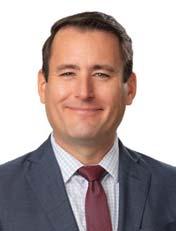
 ThompsonHine.com
Kris Brandenburg* Stephen M. King Dean Spoor Jeremy D’Abreau *Member, 2024 LEAD Clermont Community Leadership Program
ThompsonHine.com
Kris Brandenburg* Stephen M. King Dean Spoor Jeremy D’Abreau *Member, 2024 LEAD Clermont Community Leadership Program
RIDING HIGH
The annual Ohio Renaissance Festival returns to Harveysburg, transporting the Warren/Clinton counties border area near Caesar Creek State Park back to a 16th-century era of knights, maidens, and magical delights. A five-acre expansion of the festival grounds welcomes visitors through October 29.

ROOM TO ROAM
The picturesque village of Willy Nilly, which appears every September on the festival grounds, is joined this year by Whimsy Woods, a five-acre expansion. The woods host four all-new performance stages as well as Barbarian’s Ring, which hosts sword fights and other duels.
SADDLE UP
Many visitors’ favorite festival experience is watching brave knights engage in heart-pounding jousting matches (right) showcasing their skill, courage, and chivalry.
FANCY FARE
At the Renaissance Festival you can eat like a 16th-century local (huge turkey legs, hearty stews) or stay appropriately modern (burgers, pizza). Afterwards you can shop at craft artisan booths scattered throughout the festival grounds.
THE GAME IS ON
For the young and young at heart, the festival offers a dozen different games of skill (archery, axe throwing, and Drench a Wench) as well as rides, slides, and a new allnatural playground.
THE JUMP PHOTOGRAPH BY CHECKMATE PHOTOGRAPHY 12 REALM FALL 2023
CULTURE

FALL 2023 REALM 13
FUELING THE FUTURE
Hightowers Petroleum, the Middletown-based company that buys and sells oil and gasoline, might be a family business founded by Steve Hightower in 1982, but he wasn’t the first in the family to be an entrepreneur. His family has had a history of starting businesses since 1957.

Hightowers Petroleum recently landed funding to expand its wholesale fuel distribution business services in North America into renewable energy, including non-petroleum jet fuel and electrical vehicle (EV) charging stations. Ken Cartwright, COO of Hightower EV Solutions, says the move was a conscious pivot toward clean energy. “We’re following the hockey puck,” says Cartwright. “As society is looking more toward cleaner energy solutions, we created Hightower EV Solutions as a national charging station infrastructure provider.”
This turnkey EV approach encompasses everything from EV station planning all the way through maintenance. Hightowers handles site evaluation, construction, commissioning, maintenance, and ongoing service for the duration of the contract.
Clients cross all industries, from hotels wanting to add parking lot charging stations for guests to healthcare providers wanting to offer the same service for patients. Hightowers already has national contracts and projects with hotels, healthcare providers, universities, airports, and gas stations. While

European markets have adopted electrical vehicles ahead of the U.S., Cartwright says this country is on its way to catching up. “We’re beginning to see double digit growth in terms of year-over-year EV car sales,” he says. “The data complements those sales in terms of potential demand from an electrical grid standpoint.”
Companies are anticipating these trends and getting ahead of the demand, which is driving Hightowers to fund new innovations. President and CEO Steve Hightower says finding alternatives to fossil fuels are crucial.
“Global warming is a real thing, something the world needs to be paying attention to,” he says. “And while I’m convinced that there will be fossil fuels and liquid fuels for decades, we should be looking for alternatives.”
Hightower says it’s been challenging to secure funding as an energy business, but he recently secured funding from an unnamed investment firm to provide the necessary capital to allow Hightowers to move beyond its traditional downstream wholesale business. “The industry is structured to not allow the small guys to get into the big game,” he says. “You just have to knock on enough doors and look at the entire world as your marketplace, not just Middletown and not just Cincinnati.”
Hightower says the company is moving ahead to focus on upstream business opportunities, which include trading natural gas, liquefied natural gas, and crude oil. “That’s where our volume can actually quadruple,” he says. “Trading these fuels is traditionally coveted by major oil companies or very, very large trading companies. We’ve been able to put ourselves in a position where we can play in that market. That’s where the growth is going to come from.”
THE JUMP 14 REALM FALL 2023 ILLUSTRATION BY RONAN LYNAM / PHOTOGRAPH BY TONY ARRASMITH MANUFACTURING
Hightowers Petroleum is innovating to lead the way on renewable fuel.
—SARAH M. MULLINS









































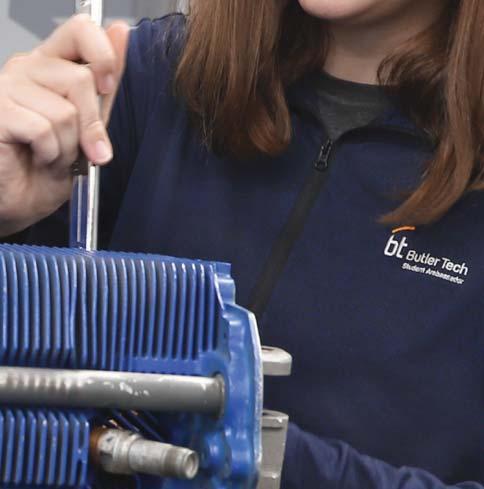
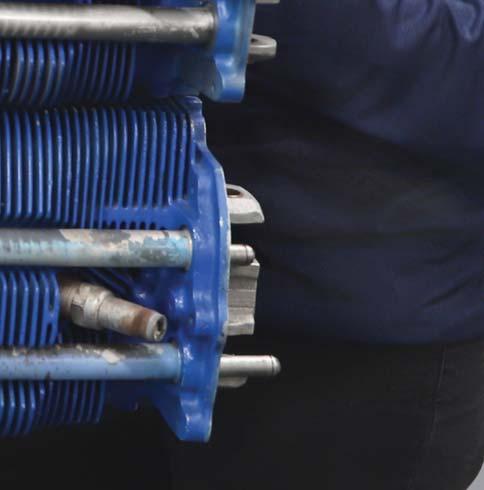










A JOLT FOR THE REGION

A new joint venture battery plant brings next-gen manufacturing to Ohio.
—ELIZABETH MILLER WOOD
Driving along the fielded stretch of I-71 between Cincinnati and Columbus, it’s hard not to notice the colossal steel skeleton rising from the flat landscape around Jeffersonville. The busy site of cranes and construction crews broke ground in June and will be home to a 2-million-square-foot facility for electric vehicle (EV) battery production, a joint venture between Honda and LG Energy Solution.
With an initial investment of $3.5 billion and a projected overall investment of $4.4 billion, the joint venture is part of Honda’s EV Hub in Ohio initiative, a multi-pronged plan to ramp up the car company’s EV production nationwide. The plan includes the retooling of several of Ohio’s existing powertrain plants (including Marysville Auto Plant, East Liberty Auto Plant, and Anna Engine Auto Plant) into EV vehicle producers.
“Th e production of electrifi ed vehicles and their components represent what we call advanced manufacturing, or next generation manufacturing,” says Rick Riggle, chief operating officer of the Honda and LG Energy Solution battery plant.
The Jeffersonville site is the only new-construction project in the EV Hub and is projected to create 2,200 jobs at full production, which is slated for the end of 2025. The annual production capacity will be approximately 40 gigawatt hours

(GWh). For context, one gigawatt could power 100 million LED lights, according to the U.S. Department of Energy.



As part of the EV Hub, the new facility will play a significant role in Honda’s vision to make battery-electric and fuel-cell-electric vehicles compose 100 percent of its vehicle sales by 2040. The EV batteries produced in Jeffersonville will be provided exclusively to Honda auto plants to produce electric vehicles across North America.
While the Marysville Auto Plant is already manufacturing Honda Accord hybrids, this new

wave of EV production in the Ohio Hub signals a fresh frontier of advanced manufacturing in the state as well as Honda’s continued confidence in Ohio as its home base. It was in Ohio, after all, that the company launched its U.S. auto production in 1982. “The knowledge and expertise established here will be shared across Honda’s entire North America auto production network in the coming years,” says Riggle.
While Honda hasn’t conducted a formal economic impact study concerning the ripple effect of the Jeffersonville site, Riggle points to the company’s 45-year track record of manufacturing success in Ohio as an indicator of healthy relationships with local officials and Ohio communities adjacent to its facilities. “We don’t expect this to change with this battery plant, as LG Energy Solution is a likeminded partner,” he says.
LG Energy Solution is a leading global manufacturer of lithium-ion batteries for electric vehicles. Both Honda and LG are striving to achieve carbon neutrality for all products and operations by 2050.


THE JUMP 16 REALM FALL 2023 PHOTOGRAPHS BY (TOP) TEDDY LEUNG/SHUTTERSTOCK.COM / (BOTTOM) ©ADAM CAIRNS/COLUMBUS DISPATCH / USA TODAY NETWORK
ECONOMIC DEVELOPMENT
PARTNERING WITH YOU TO PROTECT YOUR IP

Whether you are an entrepreneur or part of a startup, a corporation, or any other organization, your most critical assets are your proprietary ideas.
At Rooney IP, our mission is to learn your business and its objectives and then protect, preserve, and enhance your intellectual property assets in manners that will exceed your expectations.

We have over ten decades of combined legal and paralegal experience to help you establish, protect, and enforce your intellectual property rights. We are dedicated, experienced specialists in:

• Patents
• Trademarks and Trade Dress
• Licensing and Technology Transfer

• Litigation and Dispute Resolution
• Copyrights
Let’s partner together to take full advantage of your intellectual property Contact us at 513-274-9664 or Rooney iP Law.com
BLUE SKY IN MASON
Humans have been fascinated by flight seemingly forever. These days, less than 50 miles from the home of Wright brothers, a group of designers and engineers in Mason are fine-tuning the next step of magnificent flying machines.
RYSE Aero Technologies has developed the Recon, an ultralight eVTOL (electric vertical takeoff and landing) vehicle. “Ultralight” is crucial in the description of the craft that looks drone-like, with a cockpit surrounded by six propulsion units. That classification in the Federal Aviation Regulations manual, a tome of almost 1,100 pages, is covered in two pages and doesn’t require a license to operate.
Mick Kowitz, CEO of RYSE—it isn’t an acronym, just a different spelling of moving upward—leads a team of about 20 people, many of whom worked together on an unrelated air taxi project at Lunken Airport for about five years. After that company was bought by a German firm, a number of the principals went in a new direction. “We got together and took the knowledge we had and started over,” says Kowitz. “We looked at the ultralight space, which if you go to the beach and see the kite guy sitting in his lawn chair with his push mower motor behind him going slow and steady, that’s an ultralight. We basically built an aircraft that fits into that category but is significantly safer and more reliable with six independent propulsion modules in a vertical takeoff and landing vehicle that happens to be electric.”
You can’t buy a Recon yet, even if you slapped the $150,000 sticker price on the RYSE counter, but Kowitz hopes that could happen by early next year. He splits his days working with the research and development people at the 22,000-square-foot headquarters near I-71 and talking to potential investors through its crowdfunding platform. “You have to prime your manufacturing lines,” he says. “You need to bring in money to build your team and start paying for parts ahead of sales. We have a lot of reservations for vehicles, but we’re not closing on them until this crowdfunding is completed so we know what money we have to finish the manufacturing timeline.”
Kowitz is confident that his team will be among the first to perfect a vehicle that could disrupt multiple fields, including agriculture, recreation, and daily transportation. “We’re further along than almost anybody in the space,” he says. “We’ve been flying manned since June 2022, unmanned since March of that year. We were the first company to fly at the Consumer Electronics Show in Las Vegas last year (which included a flight down the strip with an Elvis impersonator at the controls). We’ve flown at farms shows all over the U.S., hundreds and hundreds of flights. We do it because of the reliability of the product.”
The Recon has been tested thoroughly and is safe to fly. “In 15 minutes,” says Kowitz, “I can teach you to fly in taxi mode, which would be about 10 to 12 miles per hour about 10 feet off the ground.”
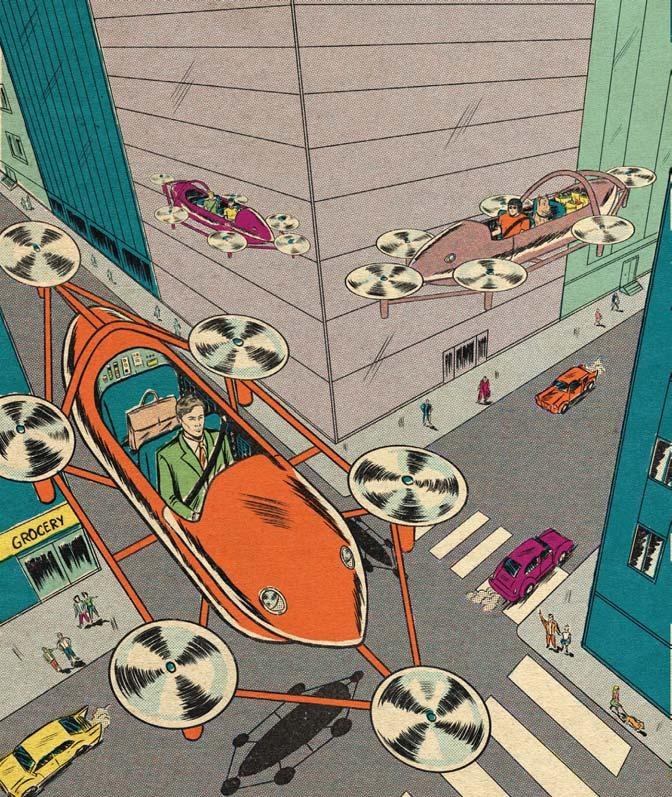
THE JUMP 18 REALM FALL 2023 ILLUSTRATION BY VAN SAIYAN
RYSE continues to test its electric flying vehicle while crowdfunding its future.
—BILL THOMPSON
TRANSPORTATION





Find a cause you love and show your support during Cincinnati Magazine’s 10-day fundraising challenge, Cincinnati Gives: November 27–December 7 2023 CHALLENGE visit cincinnatigives.org to donate to cincinnati nonprofits in need INSPIRE. SUPPORT. ACT.
BRINGING A MALL BACK
Eastgate Mall is back in the spotlight after years of facing challenges in maintaining tenants. Georgia-based developer Hull Property Group recently acquired the indoor mall with the intention of transforming it into a mixed-use development that could include restaurants, apartments, and office space along with the current tenants. Unoccupied spaces have had several owners, but the mall is currently home to major retailers such as Kohl’s, JCPenney, and Dillard’s along with smaller stores that include American Eagle and Hot Topic.
Like many retailers in the wake of online shopping, the mall has struggled with declining foot traffic over the years. “The Eastgate Mall did not fail overnight, and it’s not going to miraculously come back overnight,” says John Mulherin, vice president of government relations at Hull Property Group. “These are long, very difficult tasks to turn around these struggling properties.”
Current tenants include more than just
shopping options. Dart Ops is one of the newest arrivals, an 8,000-square-foot Nerf battle arena located near the old Sears building, and Glowgolf is a glow-in-the-dark miniature golf course.
Ahead of the purchase, Union Township hired McGill Smith Punshon (MSP), a master development firm, to craft a comprehensive master plan and launch an economic feasibility study, which is nearing completion. Once this critical step is finalized, township officials will further engage and survey the public to get an idea of what the community is hoping for. The feedback will help shape the future redevelopment plan.
“We are excited to join the
Greater Cincinnati and Union Township community,” Jim Hull, owner of Hull Property Group, says in a statement. “We love the area, and Eastgate Mall can and should continue to be a viable shopping and dining destination. We aim to reposition Eastgate Mall by working with community leaders and adjacent property owners to create a successful future for the mall and the Union Township’s critical retail corridor. The first step is participating in a vision for the area and ensuring all stakeholders are engaged.”
Mulherin says a thriving mixeduse property has the potential to benefit the entire Eastgate area, but the initial focus is on stabilizing and assisting existing businesses before moving any further. “Our number one goal is to help the existing tenants,” he says. “If we want to save this property, we can’t have the continual exodus of tenants—if it fails completely, there is no development opportunity. [We’re doing the] hard work of figuring out the property and figuring out ways to help increase sales, and anything else to that is secondary.”

THE JUMP 20 REALM FALL 2023 PHOTOGRAPH BY JUSTIN SCHAFER
REAL ESTATE
Eastgate Mall’s new redevelopment plans are inching closer to reality.
—SARAH M. MULLINS
“We aim to reposition Eastgate Mall by working with community leaders and adjacent property owners,” says Jim Hull.
NEW LIFE Eastgate Mall has been purchased by Hull Property Group from Georgia, which plans to work with community leaders to reimagine the space.


Professional Education EMPOWER YOUR ORGANIZATION WITH MIAMI’S MINIMBA CERTIFICATE Provide key business knowledge and leadership skills for the modern workplace with five short-term, self-paced online courses. TOPICS IN FIVE COURSES INCLUDE: •Change Management •Cross-Cultural Communication •Design Thinking •Entrepreneurship •Financial Acumen •Innovation •Leadership Ethics •Leveraging Technology •Marketing and Branding •Strategic Planning $175 per Course START AS SOON AS TODAY LEARN MORE: MiamiOH.edu/miniMBA
“It gave me just enough of the information I needed without being overwhelming. The coursework allowed me to hone and enhance my skills in my current role.”
Vice
for People and Culture and CHRO,
Email us about group rates and custom solutions for your organization: professionaled@MiamiOH.edu
JANINE WATKINS
President
Denison University






FALL

November 7–10 | 6–10 p.m.






Our lavish four-night dinner series returns to celebrate the bounty of Fall. Be sure to #savorthedate for this
HILTON CINCINNATI
NETHERLAND PLAZA HOTEL

CINCINNATIMAGAZINE.COM/SAVOR



PRESENTING SPONSORS



A PORTION OF THE PROCEEDS BENEFIT

SPONSORS




CINCINNATI MAGAZINE PRESENTS
Who’s empowering your growth?




70



FALL 2023 REALM 25 PHOTOGRAPH COURTESY SPOOKY NOOK SPORTS CHAMPION MILL THE SPOOKY NOOK SPORTS COMPLEX HAS JUMP-STARTED DEVELOPERS’ INTEREST IN HAMILTON. 46 Public officials set their priorities 40 Career technical education takes off 34 Hospitals bring care closer to home 26 Hamilton’s resurgence is spooky strong DEEP DIVE
Hamilton’s Resurgence Is Spooky Strong
Incorporated in 1810, the city of Hamilton was a town on the forefront of the Industrial Revolution. City leaders of the 19th Century harnessed the power of the Great Miami River to power a new machine-driven economy, and industrial magnates built sprawling factories producing paper, vaults, safes, locomotives, and machine tools. During the world wars, Hamilton factories churned out engines, tank turrets, and gun lathes.
It was a great run, but by the later years of the 20th Century, as the manufacturing economy in the U.S. waned, Hamilton became an emblem of the Rust Belt. Once-mighty powerhouses like Champion Paper and Mosler Safe shrunk and eventually departed, leaving shells of factories in their wake.
Hamilton acquired a reputation, fairly or unfairly, as a town whose best days were behind it. Growth, both in population and business, eluded it. It became so frustrating that in the late 1980s its mayor, following the recommendation of a marketing expert, decided to append an exclamation point to the city’s name in an effort to generate attention. The new name (Hamilton!) never really caught on, and mapmakers rejected it. Although it did result in national, even international, publicity for the city, much of the attention was disparaging.
These days, there’s no need for superfluous punctuation to get the world’s attention. Just in the last few years, hundreds of millions of dollars worth of new developments in office, industrial, housing, and retail have been built or planned. Some of Hamilton’s sprawling old industrial sites have been redeveloped, rehabilitated, or purchased with plans to build new commercial and
THE CITY’S ECONOMIC BASE DRIED UP WHEN LEGACY MANUFACTURERS
SHUT DOWN, BUT A NEW WAVE OF EMPLOYERS IS ATTRACTING DEVELOPMENT DOLLARS.
BY DAVID HOLTHAUS
PHOTO ILLUSTRATION BY CUT IT OUT STUDIO
PHOTOGRAPH BY TKTKTK DEEP DIVE 26 REALM FALL 2023

residential properties. That, in turn, has sparked new developments in the hospitality business, as additional hotels and restaurants are in the offing. In the span of a few years, Hamilton’s identity has shifted from Rust Belt Burg to Renaissance City.

“There’s just a lot of momentum,” says Bob Hoying, a Dublin, Ohio developer whose company is planning a $150 million mixed-use project on an old manufacturing site along the Great Miami River.
Downtown Hamilton, once the site of a single hotel, is now expecting six new ones, which city officials expect will be built over the next three to five years. On the food and drink scene, the Cincinnati-based owners of Incline Public House in East Price Hill and Jefferson Social downtown opened Billy Yanks in 2021 and are planning two new concepts. The city’s first brewpub, Municipal Brew Works, is expanding, and two others have either opened or are on the way.
Major new mixed-use developments are on the drawing board. Crawford Hoying, the Dublin-based company that took control of The Banks development on the Cincinnati riverfront last year, is planning a Banks-scale project— including housing, hotels, and retail— on 18 acres along the Great Miami. In August, the company completed its purchase of the property that’s now the site of a scrap recycler and was once part of Champion Paper’s operations.
SPOOKY NOOK LEADS THE REDEVELOPMENT CRAZE
THE SPARK FOR MUCH of Hamilton’s positive momentum is a $165-million development called Spooky Nook Sports, which its owners say is the largest indoor sports facility in the U.S. The Pennsyl-

vania-based owner bought 40 acres of land and deteriorating buildings once belonging to Champion Paper and transformed it into a complex that can host sports tournaments ranging from basketball to lacrosse to pickleball to soccer and beyond. There’s a total of 1.2 million square feet under roof, the equivalent of seven or eight Kroger
superstores.
“It’s why we’re seeing an acceleration of development,” says Hamilton City Manager Joshua Smith. “We were already seeing an upward trend in restaurants and unique retail, but Spooky Nook has certainly moved that along a little bit faster.”
The main Spooky Nook facility
DEEP DIVE 28 REALM FALL 2023 PHOTOGRAPHS COURTESY SPOOKY NOOK SPORTS CHAMPION MILL
is a former paper mill that dates to the 19th Century and has been rehabilitated under historic preservation guidelines, with its brick shell and massive supporting beams retained and its long steel windows restored. The sports facilities opened for business in January. Youth sports is the main attraction, but far from the only draw. A hotel in the same
building, the 233-room Warehouse Hotel, opened in 2022, and an expansive fitness center opened last year across the street in a newly built facility.
Beyond sports, Spooky Nook is also a significant addition to the region’s conference and meetings business. A 600,000-square-foot conference center opened in 2022, a meeting space far

NEW USES



Spooky Nook Sports has transformed the site of Champion Paper’s manufacturing plant (black & white image) into a family destination, which is attracting further development in Hamilton.
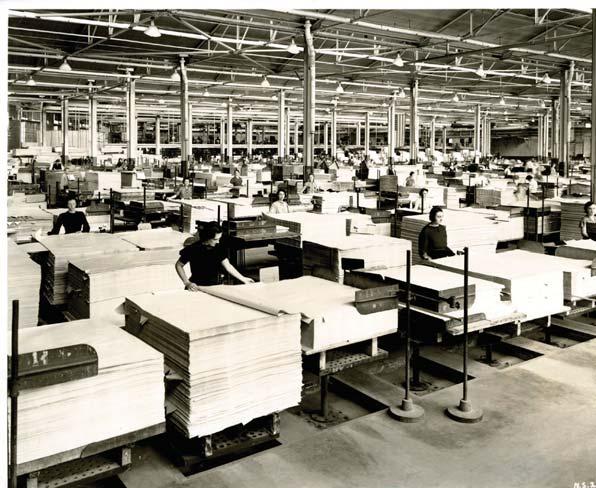

bigger than the Sharonville Convention Center and almost on par with the available space at downtown’s Duke Energy Convention Center. In August, the sales force of a large national company convened there and used the sports facilities for team-building exercises, says Scott Rodgers, Spooky Nook’s general manager. There are a restaurant, a brewpub, touristy retail, and more on the way.
Spooky Nook’s owners have said they expect more than a million visitors a year when the facility hits its stride. Many of them will come for events like the Under Armour Association girls basketball tournament that was held over four days in July. High-school age club teams from around the country brought more than 15,000 players, parents, siblings, friends, and relatives to converge on North B Street in Hamilton over that long weekend, Rodgers says.
Spooky Nook will capitalize on the big business of youth sports and sports tourism. The sector rebounded quickly after the COVID-19 shutdown, and in 2021 it generated $39.7 billion across the U.S. in direct spending on tournaments, hotels, restaurants, merchandise, and other recreation, according to a report by the Sports Events and Tourism Association. That spending in turn generated a total economic impact of $91.8 billion.
Spooky Nook’s Hamilton venue is modeled after the company’s smaller 700,000-square-foot site in Manheim, Pennsylvania (between Harrisburg and Lancaster). Sam Beiler opened it in 2013 after he and his wife traveled far and wide attending their daughter’s volleyball matches across the country. Beiler owned an Auntie Anne’s pretzel franchise in Pennsylvania, and when he retired the idea of building a new and improved volleyball center came to him. He started searching for abandoned warehouses near their home in southeastern Pennsylvania for a suitable site
FALL 2023 REALM 29 CHAMPION PAPER PHOTOGRAPH COURTESY OF THE OHIO HISTORY CONNECTION
and eventually found one on Spooky Nook Road in Manheim. He adopted the street name for the new sports facility.
Around the same time in Hamilton, the last vestiges of the oncemighty paper industry closed. By 2012, Hamilton was without a paper mill for the first time in 164 years, as the operations once owned by Champion and Beckett Paper both closed that year. Plans moved forward to auction the Champion property along the river, but Smith got wind of a real estate investor’s plan to turn the historic mill on 45 riverfront acres into a cold-storage facility. “I went back to city council and said, We absolutely cannot let that happen,” he says.
On Smith’s recommendation, city council made the decision to buy the buildings and the property for $400,000. “That was the critical thing,” he says. “We had to control our future.”

But what to do with it? That’s where a bit of serendipity came in. During an auction of the mill’s machinery and equipment, Smith encountered Moses Glick, an Amish entrepreneur from Pennsylvania who bought and sold surplus industrial and farm equipment. Glick eventually bought not just the old equipment but the mill and the real estate at a good price with the understanding that he’d make improvements, most notably taking care of environmental issues that had accumulated over 150-plus years of papermaking.
During trips to Hamilton to inspect his new purchase, Glick and his vice president of operations, Mark Frank, would have dinners with Smith. Frank kept talking about a big new sports complex near their homes in Pennsylvania called Spooky Nook.
“He said, That’s what we need to turn this into,” Smith recalls.
At Frank’s urging, Smith and other city leaders took a field trip to visit the original Spooky Nook. Like Glick, Nook owner Beiler was raised Amish. During the field trip, the two of them began talking in a language Smith didn’t understand but believes was Pennsylvania Dutch, the German dialect spoken by Amish. The upshot of the trip and the conversation was that Beiler agreed to visit Hamilton to tour the Champion site and possibly serve as a consultant on its redevelopment. He liked it so much he bought the property.
“He fell in love with the city and fell in love with the site,” says Smith. “That was right around 2016, and Sam has been working on the project ever since.”
The indoor sports facility opened in January and features 46 volleyball courts, 28 basketball courts, pickleball courts, indoor and outdoor turf fields for soccer, football, flag football, lacrosse, field hockey, a 200-meter indoor track, a 65,000-square-foot fitness center, and a climbing center.
A pickleball tournament is scheduled for October with brackets for boys, girls, men, women, and mixed doubles. In the fall, a youth basketball tournament organized by MADE Hoops is expected to bring in about 5,000 people.
These kinds of events often are mini-vacations for families that need places to stay and dine for several days. Spooky Nook’s onsite hotel can accommodate only so much. During a basketball tournament over the summer, families had to search as far away as Northern Kentucky to find lodging, a good 45-minute drive from Hamilton, Smith says.
As Spooky Nook’s event calendar
DEEP DIVE 30 REALM FALL 2023 PHOTOGRAPH BY DEVYN GLISTA
WELCOME BACK
fills up, the demand is certain to grow. “It’s currently just in its first year of operation,” says Smith. “It will bring more and more people into town, which provides an opportunity to capture a lot of that hotel traffic.”
“GO AS FAST AS THE MARKET WILL ALLOW US”
SPOOKY NOOK’S ARRIVAL helps explain the remarkable and sudden interest in hotel building in Hamilton’s downtown core. As recently as a few years ago, only one first-class hotel was operating in the city. Today, developers are scrambling to take advantage of Hamilton’s historic structures and transform them into upscale hospitality.
A development team associated with Vision Realty Group of Northern Kentucky is redeveloping the former Anthony Wayne Hotel—situated across the way from Hamilton’s landmark Soldiers, Sailors, and Pioneers Mon -

ument—into a 54-room Hilton brand to be called the Well House Hotel. The 100-year-old, seven-story building was Hamilton’s showcase hotel for decades, but closed and was sold at a sheriff’s sale in 1964 and then converted into senior apartments. The proposed $16-million hotel development is being undertaken with the help of state historic preservation tax credits and a grant and loan from the city.
In June, two out-of-town developers announced a $48-million plan to convert a former city building on High Street into a hotel. The historic Art Deco structure was built as a New Deal project in 1936 and housed Hamilton’s government offices until 2000. It’s now the site of Municipal Brew Works, which opened in 2016. Under the new plan, the brewpub will expand and developers will build a neighboring four-story addition with 100 rooms to bring the room total to 159. The hotel brand could be Hilton, Hyatt, or Marriott, developers say, and open in the fourth quarter of 2026. That project is

FALL 2023 REALM 31 PHOTOGRAPH BY JUSTIN SCHAFER
Food and drink entrepreneurs with Billy Yanks (above) and Municipal Brew Works have helped inject energy back into downtown Hamilton.
TAKEAWAYS
HAMILTON’S COMEBACK
Hamilton is attracting hundreds of millions of dollars worth of new developments in office, industrial, sports, housing, and retail on its sprawling old industrial sites along the Great Miami River. Six new hotel projects are taking shape in its downtown area.
SPORTS OF ALL SORTS
The spark for much of Hamilton’s positive momentum is the $165-million Spooky Nook Sports development, the largest indoor sports facility in the U.S. It transformed 40 acres of land and deteriorating buildings once belonging to Champion Paper into a complex that hosts tournaments ranging from basketball to lacrosse to pickleball to soccer and beyond.
BUILT IT, AND THEY WILL COME
Modern manufacturing has returned to Hamilton, led by 80 Acres’ two indoor vertical farms and its headquarters building. Manufacturing companies from France, Ireland, and Spain have opened facilities near the city in recent years.
proposed by Utah-based Acumen Development and Indiana-based Spectrum Investment Group.
Dining options are also expanding. In 2020, Cafeo Hospitality Group opened Billy Yanks restaurant on Main Street in a 19th-Century building that had been vacant. Cafeo also runs Incline Public House and Somm Wine Bar in East Price Hill and Jefferson Social in downtown Cincinnati, and Smith says the company is planning two more restaurant concepts in Hamilton. Blue Ash-based Fretboard Brewing opened its second location in downtown Hamilton in 2019.
By far, the biggest plans outside of Spooky Nook come from Crawford Hoying. In August, the company closed on the purchase of 18 acres now occupied by a scrap and recycling operation. What it’s planning rivals the scale of Spooky Nook, which is directly across the Great Miami from the new development site.
Crawford Hoying plans $150 million in new construction in three phases over more than 10 years. Although the company says plans may evolve, the first phase is slated to include a 120-room hotel, 176 apartments, six townhomes, and 5,000 square feet of retail space. The recycling company has 18 months to move its operations from the site.
The site was once part of Champion Paper’s operations, and there are some century-old structures the developer will assess to see if they can be adapted, says Hoying. “We love the challenge of redeveloping sites where we can keep skin,” he says. “There’s just some beautiful old brick buildings and facades that we would love to keep
with some of our redevelopment as we look at building out the bulk of the site.”
The city is providing a $3 million forgivable loan, and its agreement calls for the first $50 million phase of development to be finished by December 2026. The second $50 million phase is to be finished by 2031, and the last $50 million portion by 2036. “We want to go as fast as the market will allow us,” Hoying says. “We certainly see the possibility that this
could move much quicker.”
He says his company’s investment is linked to the physical location of the site on the Great Miami River; its proximity to German Village, a nineblock historic residential district just southwest of the site; and the draw of the Spooky Nook development across the river. “This really is a perfect site for what we do,” he says.
While sports, hotels, restaurants, and brewpubs get the attention, Smith says he’s still focused on what made Hamilton the city it is today: manufacturing. The city’s main source of revenue is income taxes, and good-paying jobs bring in more tax dollars to fund city services. “Our number one objective is always going to be jobs, because that’s what pays the bills,” he says.
DEEP DIVE
“YOU HAVE TO HAVE A COMMUNITY THAT PEOPLE WANT TO BE IN SO BUSINESSES CAN ATTRACT THE WORKFORCE NECESSARY TO RUN AN OPERATION.”
“That’s what gets the trash picked up and what lets the medic unit roll out to someone in need and the police cruiser respond to a car accident.”
One of the fastest-growing manufacturers is indoor vertical farming company 80 Acres Farms, which operates two indoor growing facilities in Hamilton. The company also has its headquarters there.
City leaders have also courted foreign companies. Last year, Spainbased Saica Group began production of corrugated packaging at a 360,000-square-foot facility in an industrial park southeast of downtown. Italy-based machine tool maker Salvagnini maintains its North American headquarters in Hamilton, where it’s expanded in recent years. Paris-based Valeo supplies heating and air conditioning systems to automakers around the country from its Hamilton location. Synergy Flavors, an Irish maker of extracts for the food and beverage industry, operates a plant in Hamilton that produces coffee and tea flavorings.
“We go after advanced manufacturing very aggressively,” Smith says. “The more diverse our local economy is, the more resilient it is.”
One of Smith’s first challenges as city manager was to try changing Hamilton’s reputation so companies would consider locating there. “A lot of our early strategies were really about placemaking and about changing the impression of Hamilton for people coming into the community,” he says.
He recalls a conversation with Claude Davis, the former CEO and current chairman of First Financial Bancorp. After Smith was hired, the two drove around town as Davis related how the bank had moved jobs out of Hamilton because it was so difficult to recruit talent. “A lot of what he said really resonated with me,” says Smith.
First Financial traces its roots to its 1863 founding in Hamilton, but in 2008 the bank moved its corporate headquarters to Cincinnati. “Having the corporate center in Cincinnati is expected to enhance the company’s opportunities to attract and retain
talented associates who will help to grow the business,” the company said in its announcement of the move.
Other companies made similar moves out of town. Mercy Health, which opened the first hospital in Butler County in Hamilton in 1892, closed the hospital in 2001 and focused on expanding its presence in the neighboring city of Fairfield.
Ohio Casualty, an insurance company founded in the city in 1919, employed thousands of Hamiltonians over the years. It also moved to Fairfield in 2010 after its purchase by Liberty Mutual.
While those losses stung, the experience led to a reckoning and eventually to the creation of a plan to reverse the tide when Smith was hired in 2010. “To me, attracting jobs is a function of placemaking,” he says. “You have to have a community that people want to be in so businesses can attract the workforce necessary to run an operation.”
A little more than 10 years later, the results speak for themselves.
VISITOR COMFORTS
Vision Realty Group of Northern Kentucky has proposed a $16-million renovation of the old Wayne Hotel with the help of state historic preservation tax credits and a grant and loan from the city of Hamilton.

FALL 2023 REALM 33 PHOTOGRAPH BY JUSTIN SCHAFER
Health Care Close to Home
BY JOHN STOWELL
Dan takes his first steps gingerly, supported on his right by a uniformed nurse and on his left by the encouraging words and strong shoulder of his physical therapist. Only a few hours earlier, surgeons had replaced his right knee—the one worn to the bone by years of hardcourt tennis and, lately, ill-advised pickleball dives—with a titanium substitute. Now that the local anesthesia has worn off, he’s walking the halls of TriHealth’s new Finneytown outpatient center.
By dinnertime, Dan will be holding court in his favorite chair, stroking his Black Lab’s shiny coat and enjoying some pampering from his wife and kids—not the hospital’s second shift.
“Better technology, more advanced implants, less invasive surgical techniques,” says TriHealth CEO Mark Clement. “That’s what’s changed as our industry has evolved, and it’s meant that we can get our patients out of the hospital setting faster with better clinical results and at a lower cost.”

PHOTOGRAPHS COURTESY TRIHEALTH 34 REALM FALL 2023
LARGE HOSPITAL SYSTEMS BRING NEW TECHNOLOGY TO WHERE THEIR PATIENTS LIVE.
DEEP DIVE
BUILDING THE BLOCKS
Today, Clement says, hospitals more often focus on the very sick or severely injured. And while new hospitals are still being built around the country and here in the Cincinnati region, new infrastructure is more often built for rehabilitation, specialty services, and outpatient care. These brick-and-mortar facilities also house private practices and support additional medical buildings and supplier businesses within a stone’s throw of the front door. The Finneytown facility is TriHealth’s 13th ambulatory health care center.
Check out the sprawling Mercy Hospital business corridor in Anderson Township or The Christ Hospital Health Network’s medical center near Liberty Center mall in Butler County’s Liberty Township. Or how UC Health’s 160-bed West Chester Hospital, now 14 years old, has helped
boost the Tylersville Road economy in Warren County.
Two hospitals are now under construction in the rapidly growing area around Mason. Christ is constructing a 157,000-square-foot, 60-bed facility on Innovation Way, while Bon Secours Mercy Health is building Kings Mill Hospital, a similar sized facility near Kings Island. Both hospitals will employ more than 200 with plenty of room to grow—empirical evidence that health care is a key driver of economic development.
Mason Economic Director Michele Blair has said for every position these new medical facilities create, 2.5 additional jobs are likely to be created in and around the community.
Perhaps no other system has built more infrastructure in recent years than Cincinnati Children’s. From Batesville and Greensburg in south-
eastern Indiana to its newest venture along the I-75 corridor in Centerville, the nation’s top ranked children’s hospital has expanded its reach beyond its Avondale campus. That campus itself has seen tremendous expansion, with the opening two years ago of its $600 million critical care building.

In the northern suburbs, Children’s partnered with UC Health in 2016 to build a Proton Therapy Center on their Liberty Center campus, bringing innovative targeted kids’ cancer treatment to our region. The latest project, now underway, is construction of 12 extended-stay apartments on the Liberty campus, which families of cancer patients can use while their child is undergoing treatment.
Also on the books and ready for shovels, hammers, and welders are a 25,000-square-foot medical facility
FALL 2023 REALM 35
TriHealth CEO Mark Clement (above and far left on opposite page next to Cincinnati Mayor Aftab Pureval) is leading a shift in brick-and-mortar expansion.
in Union, Kentucky, that will focus predominantly on primary care and a 110,000-square-foot health care center in the Eastgate area, near TQL’s headquarters at U.S. 32 and Interstate 275. Both will open next year.
“We’re making the investment so that the children of Clermont County as well as the communities to the east can receive world class health care closer to their homes,” says Children’s Chief Operating Officer Evaline Alessandrini, MD. Children’s is the largest hospital system in the Cincinnati region and the second largest employer overall, with more than 18,400 staff.
ACOMMON RATIONALE
for hospitals when they make the decision to invest in large infrastructure projects is: You assess the need, and you go where the patients are.
“We feel strongly that people want their health care close to home,” says Brian Gwyn, Mercy’s market president in Cincinnati. “We hear this from our patients all the time. Your doctor is local. Your pharmacy is probably just a few miles away. When it’s an emergency or if you need imaging or physical therapy, you want it close by.”
Clement agrees that people want to be able to access health care within a 15-minute drive from their home. “Patients want and we are delivering a one-stop shopping experience for health care at TriHealth,” he says.
TriHealth’s flagship hospital is Good Samaritan in Clifton. It also operates Bethesda North in Montgomery, Bethesda Butler in Hamilton, Bethesda Arrow Springs in Lebanon, and McCullough-Hyde in Oxford and is part of a joint venture with Select Medical operating TriHealth Rehabilitation Hospital on Dana Avenue. But its future isn’t focused on adding
to the community’s inventory of complex acute care hospitals, says Clement.
‘’We have not opened a new hospital in the nine years I’ve been here,” he says, “and we don’t have any plans to do so in the future.’’ Instead, he explains, TriHealth will continue to refine a unique business model that awards them more for promoting preventative health care than for the traditional fee-for-service compensation that’s governed the U.S. medical industry for years.
Clement believes the long-term commitment to preventative health care among TriHealth’s 60,000-strong patient community and its work with the federal government to create what he calls a “value-based payment system” will keep people out of the hospital and reward TriHealth for its efficiency and improved community health. “We’ve had to be a disrupter in our industry and take a lot of risk to do this,” he says, “but we’re already seeing results.”
Hospital utilization rates (defined as admissions per 1,000 people) are declining and, says Clement, “we’re looking at a lot of empty beds.” Hospitals like Deaconess have closed or consolidated, and many are hurting financially. COVID accelerated what the American Hospital Association last fall called “the worst financial crisis since the pandemic began.” A report the group commissioned predicted that more than half of U.S. hospitals and perhaps as many as two-thirds would operate in the red in 2023.
“Hospitals did prove they were an essential role in dealing with COVID,” says John Palmer of the Ohio Hospital Association. “But workforce issues— where the magic happens—took a beating. The burnout among clinicians, doctors, nurses, and support staff was high, and we’re still feeling the effects.”
Palmer says a recent report indicated that more than 600 U.S. hospitals are facing an existential financial crisis. In addition to staffing shortages, he says, hospitals contend with chronic supply chain issues, changes in Medicare reimbursement, and general inflation. “A full 10 percent in Ohio are at risk of closing,” he says, “many of them in our rural areas.” Palmer noted that eight of Ohio’s 88 counties currently have no hospital at all.
So where are the patients? Why are so many beds empty? We’re getting older—shouldn’t we be getting sicker, too?
“COVID taught us there is absolutely a need for acute care hospitals,” Gwyn says. “People were really sick and couldn’t be treated in an outpatient setting, so we were overwhelmed at Mercy. In a pandemic, you absolutely need those beds and there weren’t enough of them.”
A FOCUS ON LOCAL
Brian Gwyn, Mercy’s market president in Cincinnati, feels strongly that people want their health care close to home.

Hospitals, both Clement and Gwyn acknowledge, are for the seriously ill or injured—as the medical professionals define it, when the patient’s case mix index approaches 2.0. For context, a natural birth is about a 0.5, sepsis is 2.5, and an organ transplant or a condition requiring a ventilator could be a 4 or 5. Clement says TriHealth’s inpatient case mix index is around 2.1, higher than it used to be and longer in duration.
“You’re admitted when you have complex medical issues that require close monitoring and meds,” Clement says. “But now, thanks in large part to advances in technology, we can provide robust quality health care less expensively at home.”
TECHNOLOGY ALLOWED
Dan to get a new knee and be home in time for dinner. Technology enables a wheelchair-bound patient to video conference with her primary care physician instead of en-
36 REALM FALL 2023 DEEP DIVE
during a long ride downtown for a routine examination. A patient with a rare disease could, similarly, confer with a specialist based in Los Angeles. Electronic medical records make sharing patient history a breeze, saving time and perhaps lives.
Health care executives, in making the decision to build infrastructure, may need to negotiate through dif-
ferent hierarchical structures and approval mechanisms, but they appear to use similar factors in determining whether to proceed. Is there a geographical gap in health care services—a so-called “medical desert?” Is there a growing need for nearby specialized care services? Is it possible to partner with or piggyback on the services that already exist in
the community? Is there a patient load sufficient to support the investment? Can we provide the necessary staffing? Is land available? And, importantly, does the community want the new facility? Community support, Gwyn and Clement note, is paramount.
“It’s important to coordinate with the community and develop a rap-
NOW OPEN
The new urgent care team at Mercy Health Urgent Care-Hamilton, which opened in September along with Mercy Health Urgent Care-Fairfield.
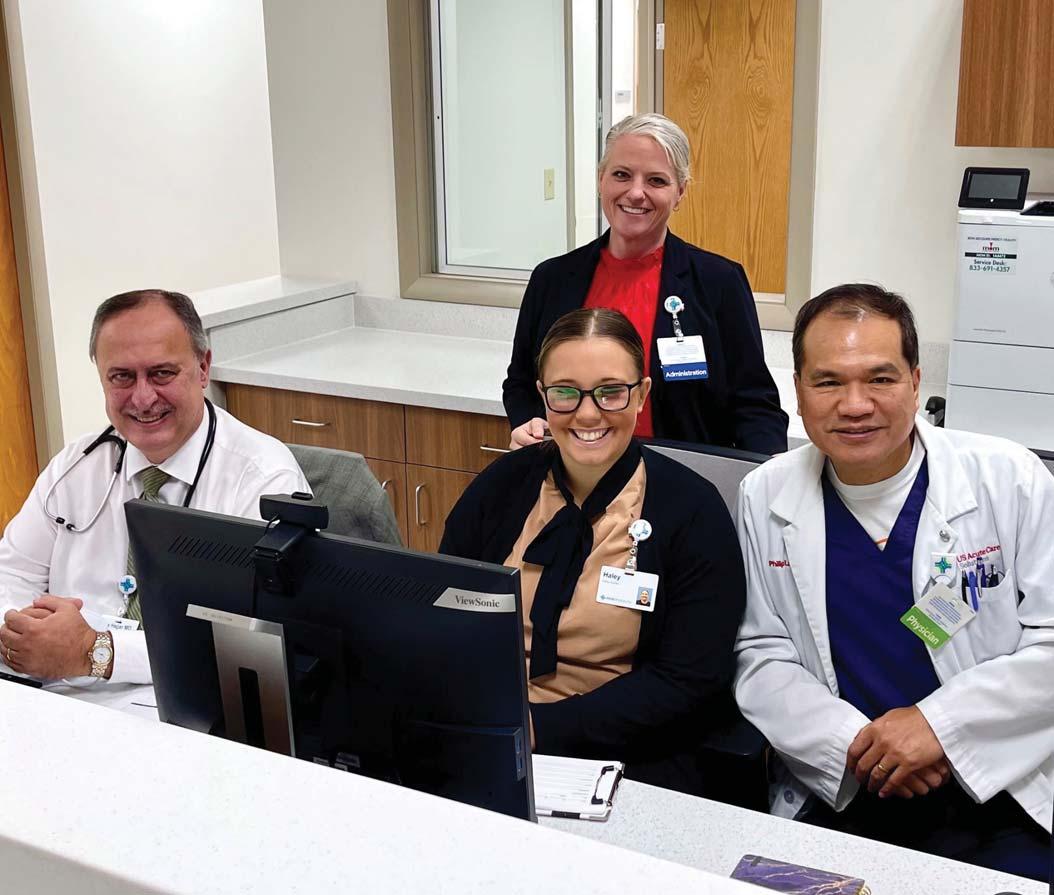
PHOTOGRAPH COURTESY MERCY HEALTH FALL 2023 REALM 37
TAKEAWAYS
CLOSER, FASTER, BETTER
Full-service hospitals are focusing on the acutely ill these days, while large health care organizations build outpatient treatment centers in the northern and eastern suburbs to be closer to where patients live. “We can get our patients out of the hospital setting faster with better clinical results and at a lower cost,” says TriHealth CEO Mark Clement.

STAFFING AND DOLLAR PRESSURES
More than 600 U.S. hospitals are facing an existential financial crisis due to staffing shortages, chronic supply chain issues, changes in Medicare reimbursement, and general inflation.
PLANNING FOR THE FUTURE
Health care groups are designing new facilities that can integrate swiftly not just today’s technology, but what might come tomorrow. “We design for providing electronic records and digital imaging for doctors,” says Mercy’s Brian Gwyn. “But in the future, we’ll be looking at artificial intelligence, 3D organ printing, predictive medicine, and more.”
port with the leadership,” says Gwyn. “Typically, they are very supportive. They know it will drive the economy for the whole region as well as providing close-by medical care.” Still, there can be issues as new buildings with large numbers of employees change the community’s physical and sometimes economic environment.
The uncertain economy is playing a role, too, especially as interest rates rise. A December 2022 study from the American Institute of Architects (AIA) reported that nearly 40 percent of its members have experienced an increase in project delays since COVID and 28 percent called the slowdown a serious issue. AIA has urged its members to recognize the economic pressures facing medical group executives and “offer predictable, quick and attractive solutions who are desperate for support, but hesitant to invest in conceptual ideas.”
Planners work hard to design facilities that can integrate swiftly not just today’s technology, but what might come tomorrow. Gwyn quotes Wayne Gretsky’s famous “skate where the puck is going to be” philosophy when describing Mercy’s building designs but admits that the technology moves more quickly than a slap shot. “We design for providing electronic records and digital imaging that a doctor can pull up instantly on his cellphone,” he says. “But in the future, we’ll be looking at artificial intelligence, 3D organ printing, predictive medicine, and more.”
Hospital construction trends nationwide are tech-centered, says Hamilton Espinosa, one of the country’s leading health care experts at DPR Construction in Phoenix. “The pandemic reinforced the concept that health care organizations need to adapt their physical infrastructures
to support the demands of technology-enabled omnichannel patient experience,” he writes in a May blog.
For new construction, that means health care providers, architects, and construction managers will need to consider how quickly digital technology may advance. What digital infrastructure needs to be installed as the concrete, steel, and dry wall go up that will not only support today’s technology but tomorrow’s? It means a new approach to building design, such as providing dedicated spaces for private telemedicine sessions or improved air filtration systems. It means modularity and scalability, encouraging features like movable walls so rooms can be reconfigured when the technology changes.
And it means more attention to
DEEP DIVE
PX, a term that means patient experience. There will be a focus on more private rooms, anti-microbial surfaces to reduce in-patient infections, interior lighting that soothes rather than stuns, and more creature comforts for family members who may spend hours at their loved one’s bedside.
Clement, while not planning to build acute care hospitals in the near term, agrees that TriHealth’s facilities need the same technological footprint. Whether in a hospital bed or simply getting an X-ray at an ambulatory care facility, he believes the improvements in technology are critical to the patient experience and ultimately their health outcomes. At the same time, he’s quick to say, the human touch matters as well. He touts TriHealth’s care team concept—doctors,
nurses, pharmacists, specialists, mental care and physical therapists, nutritionists—as being the key to good health care outcomes and says the data supports it’s already made significant gains in reducing hypertension, a1c levels, and diabetes as well early cancer detection. Still, he says, the effectiveness of that human element relies on the technologies they can employ.
“Business loves this too, because preventative care and wellness programs are much less expensive than traditional what I call ‘sick care,’ ” says Clement. “Every system is perfectly designed to deliver the results it delivers, and that’s why we believe it’s important to evolve our business away from the broken system it’s been.”
That means, for TriHealth, no more acute care hospitals (at least for
now) and more neighborhood-based, fully-wired-for-action medical and rehabilitation centers.
Mercy, while still building full-service hospitals, shares TriHealth’s focus on prevention and wellness. It will take time, Gwyn says, and resolve.
“We need to make sure people are educated, exercising, getting the right nutrition, and taking their medication,” he says. “We need and want to be more proactive, especially with patients who have chronic conditions. If we can make health care more convenient for the patient, we’ll have a better chance to get that message across.”

EXPANSION ON THE WAY
Mercy Health Kings Mills Hospital is set to open in early 2024. This photograph was taken in September.
PHOTOGRAPH COURTESY MERCY HEALTH FALL 2023 REALM 39
Why TechnicalCareerEducation Is So Popular Now
BUTLER TECH PARTNERS WITH AREA BUSINESSES TO EXPOSE HIGH SCHOOL STUDENTS TO BETTER WORKFORCE DEVELOPMENT AND COLLEGE OPTIONS.
BY LEYLA SHOKOOHE
The Carl D. Perkins Vocational and Technical Education Act was first authorized in 1984 by the federal government. Its namesake, a Democratic House Representative from Kentucky, was chair of the Committee on Education and Labor until his death in 1984. The act was designed to increase the quality of technical education in the U.S. to help the economy as it tried to pull out of a recession, with unemployment sitting at 7.3 percent that year.
From its federally funded advent in 1917, when the Smith-Hughes Act was adopted allocating states with funds for increased vocational education, vocational and technical education—or career technical education (CTE) as it’s called today— promised a direct pipeline from schools to the workforce. But times were a-changing,

PHOTOGRAPHS COURTESY BUTLER TECH 40 REALM FALL 2023
DEEP DIVE
and by the time the Perkins Act was first authorized, vocational or career technical education was on the decline.
Schools had changed mandated coursework in high school, funding diminished, and CTE credits taken by students trended downward throughout the 1990s and 2000s. Students in traditional high schools who weren’t succeeding in conventional academic ways were often offloaded to CTE classes, with little regard for interest or fit.
“Every marketing season or recruitment season, we run into prospective students and families that have a perception that career tech education is lesser than,” says William Sprankles, assistant superintendent for innovative teaching and learning at Butler Tech. “And that’s because there was a movement in the 1970s, ’80s, and early ’90s where many students were forced to go to career technical education schools. They didn’t choose to go there. Those parents and grandparents remember that, and so they want something different for their child.”
IN 2018, REAUTHORIZAtion of the Vocational and Technical Education Act was signed into law by President Trump as the Strengthening Career and Technical Education for the 21st Century (Perkins V) Act. The law included three major revisions, including using the term “career and technical education” instead of “vocational education.”
“Some of our marketing and recruitment efforts are addressing the stigmas that pockets of particular families and communities might have,” says Sprankles. “But I would argue there are just as many, maybe more, that no longer have that stigma and, in fact, are on the other side of generational referral systems. We have kids coming to us whose parents graduated
from us, and their parents graduated from us. They believe we’re the best secret in Butler County.”
Butler Tech was founded in 1975 with a mission of transforming lives by making students career-ready and college-prepared. Middle school, high school, and post-secondary educational opportunities are offered, but it’s the high school career technical pathways programs that are most sought after now.
Last year, 2,500 students applied for just 1,000 available spots within the four full-time regional thematic campuses that Butler Tech operates: bioscience, school of arts, natural science center, and advanced manufacturing. Satellite programs are embedded within all 11 high schools in Butler County as well as Northwest and Colerain high schools in Hamilton County.
“Our job is to create informed consumers and make sure we open our building to give them tours, provide good literature to the external communities around our programs, and communicate how the pathways can lead to significant jobs,” says Sprankles. “They know that, if they get into a program, their kid will be debt-free and it will change their life.”
What’s offered inside each of those campus buildings are career tech pathways that lead to in-demand jobs, in-demand industry credentials, and a propulsion into college majors at both the two- and four-year levels. By attending one of the four Butler Tech campuses, students make a conscious choice to leave behind the traditional high school experience for something else.
Many of them are passionate from the start about a certain pathway and a certain career field they want to study. Other students might be looking for a fresh start or an opportunity to connect
with different people.
“What all of the kids have in common is this degree of bravery,” says Sprankles. “They demonstrate real courage to relocate to another space with a whole new student body during their 10th or 11th grade years.”
The 10th Grade Career Exploration Academy is an opportunity for students to test the proverbial waters. It functions in similar ways to freshman year of college for someone with an undecided major, allowing them to explore a variety of options and career paths.
That’s exactly what happened for Zura Zokhidjonova, a Lakota East student who learned about Butler Tech at school and was initially passionate about cooking.
NEW PATHS
“Parents know that if their child gets into a program here, they will be debt-free and it will change their life,” says Butler Tech’s William Sprankles.

“I wanted to get my foot in the door for the culinary program because it was one of the most popular ones,” she says. “I was in the business pathway all throughout my sophomore year, and while doing that I got to shadow and learn about all of the other different programs Butler Tech offers. I started getting more into the healthcare side, and I took a tour of the biomedical science campus and fell in love with the campus and the atmosphere.”
Zokhidjonova applied for the healthcare science program and was accepted. A first-generation immigrant who moved to the U.S. when she was 5, she didn’t have the parental context of a typical American high school experience. Her mother supported her decision.
“She just told me to do what I would think is best for myself,” says Zokhidjonova. “She was like, If you want to do the typical high school route,do it,but if you also want to experience life and get all these certifications, do that. She understood the importance of a high school experience, because it’s such a big thing here.”
Fellow Butler Tech graduate Alex
FALL 2023 REALM 41
SPARKING A CAREER
Butler Tech is listening to area employers in order to translate their needs into curriculum and turn out grads who can do skilled manufacturing jobs.
Werdman had a harder time convincing his parents to let him attend. “I fought with my parents for almost five months,” he says. “They were heavily wanting me to go to college, and they thought Butler Tech was not the answer. It actually took my mom coming into class to see what we were doing. She finally decided to give me a shot and let me go. I always tease around with her that I would never be where
I’m at now if I hadn’t done Butler Tech.”
Werdman knew from a young age that he wanted to be an engineer. He was exposed to Butler Tech through its machining and engineering programs while attending Colerain High School. He then decided to follow the machining pathway, figuring that he’d study engineering in college and could take advantage of the program’s hands-on experiences before entering the workforce.
So where does Werdman find himself now? He’s an employee of Clippard Manufacturing in Colerain, where he’s worked since starting a coop position at age 16. He obtained a bachelor’s degree in engineering from Miami University and an MBA from
Thomas More University, both paid for through Clippard’s tuition reimbursement program.

“We’re heavily involved with Colerain High School and Butler Tech,” says Robin Rutschilling, Clippard’s director of operations. “We donate many, many, many hours up there with Butler Tech, helping them with maintenance and educating the students. We bring students in here their junior or senior year of high school, and they co-op here. I had 22 recent students who came through the trades program. We make it pretty much mandatory that they continue their education and make an impact for themselves and with Clippard. We’re very proud of that fact.”
Rutschilling is on the board of directors of the Southern Ohio/Indiana committee of the national Precision Machined Products Association, a 90-year-old organization that promotes strong trade education for the future of manufacturing in North America. Buy-in from trade associations and affiliated organizations is essential for these pipeline programs.
“Advanced Manufacturing Industry Partnership is a nonprofit organization here in our region and we do one thing: We fill up the trades workforce pipeline for manufacturers in our region,” says Amy Meyer, board president of AMIP. “I have spent the last seven years working with Butler Tech in a variety of different capacities be-
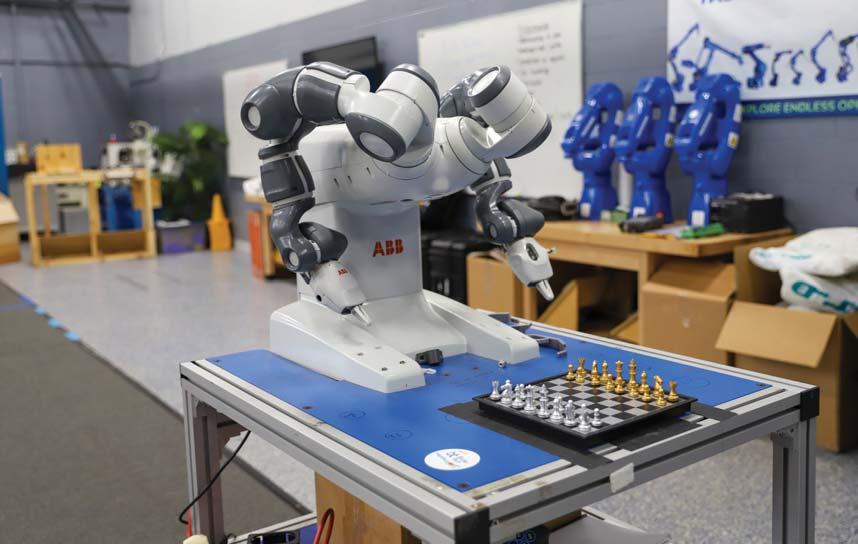
42 REALM FALL 2023
DEEP DIVE PHOTOGRAPHS COURTESY BUTLER TECH
cause they’re listening to the employers with a business ear so that they can translate our needs into curriculum and turn out great kids who can do these skilled jobs and have an incredible head start into their career.”

Werdman agrees. “There were several classes I had that were manufacturing based, and I saw several people struggle with it because it was unfamiliar to them,” he says. “Manufacturing is a part of everything. If you’re going to do anything, manufacturing is touching it, especially if you’re interested in engineering work. I definitely saw at many points that students weren’t exposure to the manufacturing process, but because I was in the workforce and
had been doing it I was able to excel, while they struggled a bit.”
Just as buy-in from the trade associations and organizations is paramount, so is that of other companies and businesses like Clippard.
“It’s not just sending the kids to Butler Tech,” says Sprankles. “The relationship has multiple layers to it. By us welcoming business partners to the table, they can influence the curriculum and the tools, equipment, and industry credentials the kids need to be qualified employees. So a good business partner coaches our teachers on how to change the junior and senior year of high school so the students are qualified to go directly to work for them.”
Some of those business partners provide Butler Tech with coaching and feedback in the classroom, while others give students what’s most coveted: access to co-ops, internships, and employment. It’s not unusual for students to be hired in their senior year of high school with the companies they co-op for; in fact, Sprankles says, that’s a standard practice for most career tech centers building pipelines into the local workforce.
“We had more than 50 students who were part of an internship pipeline program hosted by Procter & Gamble last year,” he says. “Some of those students went on to gain immediate fulltime employment, and they chose to
FALL 2023 REALM 43
TAKEAWAYS CAREER PATHWAYS
Butler Tech was founded in 1975 with a mission of transforming lives by making students career-ready and college-prepared. Its high school career technical pathways programs are its most popular; more than 2,500 students applied for 1,000 available spots last year.

OPEN TO ALL OPTIONS
The 10th Grade Career Exploration Academy is an opportunity for high school students to explore a variety of options and career paths at Butler Tech, functioning in similar ways to freshman year of college for someone with an undecided major.
SCHOOL TO JOBS
A number of business partners provide Butler Tech with coaching and feedback in the classroom, while others give students access to co-ops, internships, and employment. It’s not unusual for students to be hired in their senior year of high school by the companies where they did their co-op.
do that instead of going to college. Almost all of the students in our machining and welding programs end up with full-time co-ops, and many of them go on to work with those companies, whether that’s Rhinestahl, StandardAero, Bilstein, or 80 Acres. There are businesses all around the Cincinnati region where students are being offered full-time or part-time jobs because they earned a spot at Butler Tech during their senior year of high school.”
IN 2015, OHIO STARTed offering College Credit Plus to eligible Ohio students in grades 7 through 12, allowing them to take college courses for free in all public high schools, colleges, and universities and earn college credit. Butler Tech offers more than 60 CCP courses, making it one of the state’s most aggressive high school models. Those credits count toward college credit at Cincinnati State Technical and Community College, University of Cincinnati, Sinclair Community College, and other universities.
“We’re supporting education to allow students to receive college credit and help them earn a credential faster and for less cost,” says Liz Cicchetti, chief school partnerships officer at Sinclair. “We’re also providing access to students for college exploration while in high school to understand what jobs are out there and what are the most in-demand fields.”
One particular pathway at Butler Tech, Mechatronics, has a direct partnership with Sinclair. After graduating from high school, participating stu-
DEEP DIVE PHOTOGRAPHS COURTESY BUTLER TECH
“THERE IS SOMETHING FOR EVERYBODY AT BUTLER TECH. IT DOESN’T MATTER IF YOU WANT TO GO TO COLLEGE OR NOT, IT DOESN’T MATTER WHAT YOU WANT TO DO, THEY’LL HAVE SOMETHING FOR YOU.”
dents can earn an associate’s degree in electrical engineering at Sinclair. The college also participates in the Miami Valley Tech Prep Consortium, which, similar to CCP, helps high school students experience a career or technical field of study while simultaneously earning college credits.
“Our tech prep office is closely aligned with Butler Tech and delivers all the career technical institutions we partner with opportunities for career exploration, college credit attainment, and a scholarship when they graduate high school,” says Cicchetti. “We have students participating in both, and then we have students at Butler Tech who participate in one or the other.”
For students like Zokhidjonova, the pathways provided by Butler Tech have been life changing. She received her State Tested Nurse Aide certification her sophomore year in high school thanks to the Fifth Day Experience, a program that Sprankles— who was named the Ohio Association for Career and Technical Education’s Administrator of the Year in 2022— helped establish. On designated Fridays, students have complete control over their day—they can stay home and do homework or take a mental health day, work a regular job, do a co-op or internship, or explore any technical lab of their choice.
Now a biomedical science major on a pre-med track with a robust scholar-
ship at Xavier University, Zokhidjonova also did an internship with Cincinnati Children’s over the summer, when she found what she terms her “calling” in pediatric dermatology. She’s currently an in-patient phlebotomist at UC West Chester Hospital thanks to another certification she received at Butler Tech.
“Butler Tech is something I recommend to every high schooler I meet, every sophomore or freshman I’ve met in a Butler County school,” says Zokhidjonova. “There is something for everybody. It doesn’t matter if you want to go to college or not, it doesn’t matter what you want to do, Butler Tech will have something for you. I whole-heartedly believe that.”
SOMETHING FOR EVERYBODY
Popular programs at Butler Tech include Mechatronics (opposite page) and construction trades.
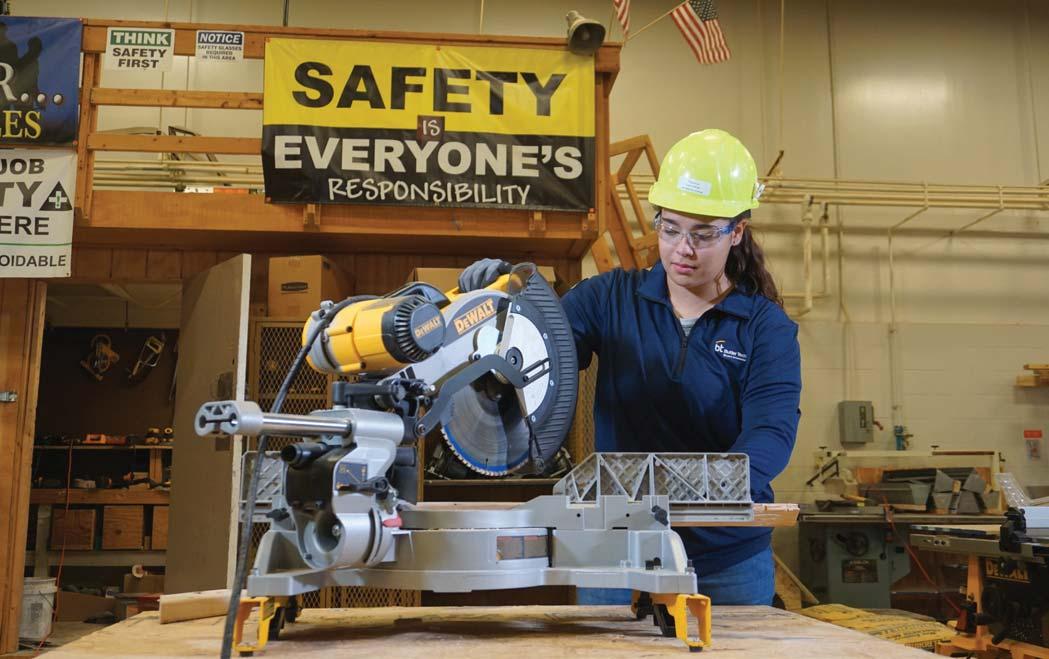
FALL 2023 REALM 45
Public Officials Focus on Business
STATE AND COUNTY OFFICIALS DISCUSS THEIR LEGISLATIVE PRIORITIES FOR SUPPORTING INDIVIDUALS AND BUSINESSES IN NORTHERN SUBURBAN AREAS.
 EDITED BY JOHN FOX
EDITED BY JOHN FOX
Check our math, but 50 percent of the onus for driving public-private partnerships to spur economic growth falls on our elected officials. Residents and businesses interact with what can be an overlapping jumble of jurisdictions when it comes to starting or expanding companies—from state legislators down to county officials to local villages and townships. Public officials are aware of those challenges, and many say they’re trying to simplify taxes, rules, and regulations.
Since this issue of Realm is focused on Butler, Clermont, and Warren counties,
we reached out to elected officials in various levels of government there to comment on their work and their goals. We invited several state senators and representatives, county commissioners in all three counties, and elected officials in Batavia, Hamilton, and Mason to answer questions about their legislative priorities and their efforts to work up and down the jurisdiction ladder and across the aisle to improve conditions for their constituents.
Participants in this discussion are Ohio State Representative Adam Mathews, who serves House District
PHOTOGRAPH COURTESY WARREN COUNTY COMMISSIONERS 46 REALM FALL 2023
DEEP DIVE
56 (Lebanon, Mason); Shannon Jones, President of the Warren County Board of County Commissioners; TC Rogers, President of the Butler County Board of County Commissioners; and Ohio State Senator George Lang, who serves Senate District 4 (Middletown, Hamilton, Oxford). Their responses have been lightly edited for length and clarity.
WHAT ARE YOUR TOP LEGISLATIVE PRIORITIES FOR THE NEXT YEAR OR TWO IN YOUR JURISDICTION?
State Rep. Adam Mathews: I will continue to work to promote Southwest Ohio and the pro-family, pro-business policies that have enabled us to grow. I have been working to ensure the Western & Southern Tennis tournament remains here and submitted House Bill 1 to lower our income taxes, resulting in $2.2 billion in savings for Ohio taxpayers. I’ll continue along these lines for the rest of the legislative session.

Warren County Commissioner Shannon Jones: Warren County Commissioners are committed to fiscal discipline while delivering the highest quality basic services that our residents and businesses have come to expect at the lowest possible cost, without raising property taxes. We continue to look for ways to provide county taxpayers with property tax relief, as we did with our property tax holiday in 2022, returning nearly $50 million in collected property taxes to taxpayers.
Our focus in the coming years will be to continue our strong track record of fiscal restraint that’s resulted in zero public debt, a Aaa bond rating, increased interest by businesses to locate in the county, and increased investment in our No. 1 industry, travel
and tourism, including sports tourism, that brings millions of visitors into the county from around the region, the country, and the world generating nearly $1.45 billion in economic activity. Keeping the quality of our services high and our property taxes low by expanding and diversifying the tax base remain our legislative priorities.
Butler County Commissioner TC Rogers: We will continue to encourage our legislators to draft property tax proposals that demonstrate three-year home value trends instead of a one-year outlier sampling. We’re also asking state government members to stabilize Medicaid qualifications to give local office holders better opportunity to establish their budget needs.
State Sen. George Lang: The only area/topic I work on is how to make Ohio the most business-friendly state in the U.S. To accomplish this, I have four key issues of focus: smaller government, reducing/reforming regulations, tax reform, and workforce development. By putting business first, we can raise the tide for all Ohioans and bolster the prosperity of our state.
With that said, one main priority I have for the near future includes reigning in a harmful Department of Taxation practice related to property tax valuation calculations that harm businesses as well as individuals on fixed incomes. Another priority is to make sure that insurance companies and construction companies are not being frivolously taken advantage of in costly and overly broad asbestos lawsuits; we want to hold bad actors responsible, but we also want to eliminate the financial burden of litigation for companies that should never have been parties to a lawsuit to begin with.
Finally, I am also prioritizing legislation that would reimburse sales tax
collection fees to retail vendors who utilize credit card transaction technology.
WHAT ARE YOUR LONGER-TERM GROWTH AND DEVELOPMENT GOALS FOR YOUR JURISDICTION OVER THE COMING 5-10 YEARS?
Mathews: I want Ohio to be a place where my kids can grow up to be virtuous and have the economic opportunity to thrive. As Warren County develops, we must strengthen our engineering and civic infrastructure as well as provide an appropriate environment for family formation.

SETTING PRIORITIES
State Rep. Adam Mathews and Warren County Commissioner Shannon Jones (also speaking on the opposite page)
Jones: Warren County is the third fastest growing county in Ohio, and project announcements throughout the state, such as Intel and Honda, will increase demands on basic infrastructure. Much of the infrastructure in the northwest portion of the county remains underdeveloped, yet its proximity to I-71 makes it attractive to those seeking quality housing options in communities with good schools and amenities. We have prioritized strategic infrastructure investments to plan for the demands of today and for years to come.
• Warren County Infrastructure Bank: Several years ago county commissioners created a “savings account” for county infrastructure projects and have made it a priority to build the fund each year; it now totals nearly $47 million. Working with the county engineer, projects are prioritized and various funding streams are leveraged to accelerate the completion of priority projects and plan for additional growth.
• Public-Private Broadband Investment: We invested $5 million of one-time American Rescue Plan Act dollars, leveraging $100 million in private investment in the county to ensure every business and resident has access to
HEADSHOTS COURTESY ADAM MATHEWS AND SHANNON JONES FALL 2023 REALM 47
TAKEAWAYS
LEADING THE WAY
Public officials in Butler and Warren counties say they’re generally focused on making the area more business friendly, strengthening local infrastructure, and reducing income and property taxes for both individuals and businesses.
SETTING GOALS
Long-term goals include improving access to broadband fiber connections, stabilizing water and sewer services, workforce development opportunities to keep students in the area, and making Ohio more competitive with other states in terms of tax and entitlement service reforms.
WORKING TOGETHER
Officials want to lead the way to encourage better communication up and down the jurisdiction ladder, from state government in Columbus through county commissioners to local villages and townships. Harmonizing and simplifying all of the tax levels would be a boon to individuals and businesses alike, they say.
high fiber broadband. Over the next three years, 100 percent of the county—roughly 57,000 doors—will have access to fiber-based broadband, with priority given to the most underserved portions of the county during the project buildout. Ensuring the successful implementation of this project over the next few years will position the county to be a beneficiary of high-tech job creation in the region.
• Strategic Master Plan for Warren County Facilities: We are actively addressing capacity challenges and building inefficiencies in all county-owned facilities while maintaining our commitment to taxpayers to keep property taxes low and to live within our means. With a $4.5 million renovation to the county’s Juvenile and Probate Court in 2019 and construction of a new $54-million jail and Sheriff’s Office in 2021, saving county taxpayers more than $30 million in debt servicing costs in the process, commissioners continue to upgrade and replace county facilities to account for the increasing demands in a growing county.
• Investing in State-of-the-Art Water and Sewer Systems: We help manage growth by protecting our water and sewer service boundaries while investing in infrastructure to support existing and projected needs. Two new water softening plants have come online in 2023, with additional investments being made to increase the level of service for customers. More investment is necessary to ensure high quality services are maintained, the newest EPA standards are met, and growth is managed appropriately.
Rogers: We want to increase Butler County efforts to work with Miami University and Butler Tech to provide resources that incentivize student

graduates to remain in Butler County to live, work, and play. In addition, we want to showcase our natural location advantages with infrastructure enhancements to attract a new level of business coming to Southwest Ohio.
Lang: Some of my longer term goals include eliminating the Commercial Activities Tax (CAT) altogether, eliminating the state personal income tax, and reforming the unemployment compensation system. All three of these goals would allow businesses to be more competitive, allow Ohioans to keep more of their own money in their pockets, and help alleviate a workforce shortage perpetuated by individuals who unduly take advantage of government benefits.
HOW CAN OVERLAPPING JURISDICTIONS (CITY, COUNTY, STATE AND FEDERAL) AND THE TWO POLITICAL PARTIES DO A BETTER JOB OF WORKING TOGETHER TO ACCOMPLISH THESE AND OTHER GOALS FOR CITIZENS?
Mathews: Open and honest communication is necessary for us all to work to accomplish the people’s work. I operate under the principles of no surprises and no embarrassing people, and this standard allows those of all levels and parties to respect each other’s dignity. It doesn’t matter who gets the credit as long as we all achieve for our constituents.
Jones: Warren County leaders maintain excellent communication with all political subdivisions within the county to uncover and understand the unique challenges facing individual communities while remaining steadfast advocates for the needs of the county as a whole. We prioritize

FOCUS ON THE PEOPLE
HEADSHOTS COURTESY TC ROGERS AND GEORGE LANG
DEEP DIVE
Butler County Commissioner TC Rogers (top) and State Senator George Lang
the relationships across both the public and private sectors and engage our elected official partners and other stakeholders in our decision making, regardless of their political affiliation, title, or geography. We’re proud of the fact that county commissioners have unparalleled working relationships with our partners, and we know that our constituents benefit from this unique governing culture. The region could take the same approach by taking the time to get to know each other and listening to the experiences of the various communities before seeking solutions.
Rogers: Encourage conversations with neighboring jurisdictions to de-
termine four or five initiatives that would most benefit their constituents’ everyday lives and their families. Accomplishing that would establish a basis for a model of communication that could tackle more unique problems that face our population.
Lang: Along with some of my already stated long-term goals, I would like the overlapping jurisdictions throughout the state to find a way to harmonize and simplify our taxing schemes. According to a recent economic competitiveness study conducted on more than 200 differing variables throughout the state, Ohio is the single worst state in the U.S. for individual taxing jurisdictions. This
cost and complexity is a turnoff for business development, and I would like to see the jurisdictions work on resolving that structure.
As far as how the two political parties can do better at working together, I think it takes listening. A good example of this is the Ohio Business First Caucus, of which I am a co-chair. It’s the largest political caucus in Ohio, it’s bicameral, and it’s bipartisan. We have private and public sector entities with differing specialties, backgrounds, and political beliefs present before lawmakers on how Ohio can continue down the path of being more business friendly.
SPORTS TOURISM MATTERS
Public officials say they’re working to keep the Western & Southern Open in Mason for years to come.

FALL 2023 REALM 49 PHOTOPGRAPH BY © KAREEM ELGAZZAR/THE ENQUIRER / USA TODAY NETWORK
community by offering full educational evaluations and ADHD assessments, providing tutoring services to the community, and adding a ninth grade program.
HOW IS SPRINGER EVOLVING WITH MODERN EDUCATIONAL NEEDS?
We offer direct, explicit, multi-sensory instruction. We fuel students’ creativity by building hands-on learning in classes like STEAM and Makerspace. Springer also hosts resident professionals in art, music, and theater as well as a visiting author. In service to educators, we’re proud to continue a long history of professional development offerings. We help the professionals in our region identify and support students impacted by dyslexia. We change the trajectory for children who struggle to learn in traditional classrooms, and we provide adults with the tools to do the same.
–E.M.W.
WHY IS THE 2023-24 SCHOOL YEAR THE RIGHT TIME FOR THIS TYPE OF FACILITY? It’s a clear testament to the university’s deep commitment to the well-being of its campus and local communities. In addition to the important clinical services provided to Miami students and employees and local community members, this facility also prepares the next generation of healthcare
BRETT MARCOUX
PRESIDENT
SPRINGER SCHOOL AND CENTER
ASK ME ABOUT The unique role Springer plays in Cincinnati’s educational landscape.

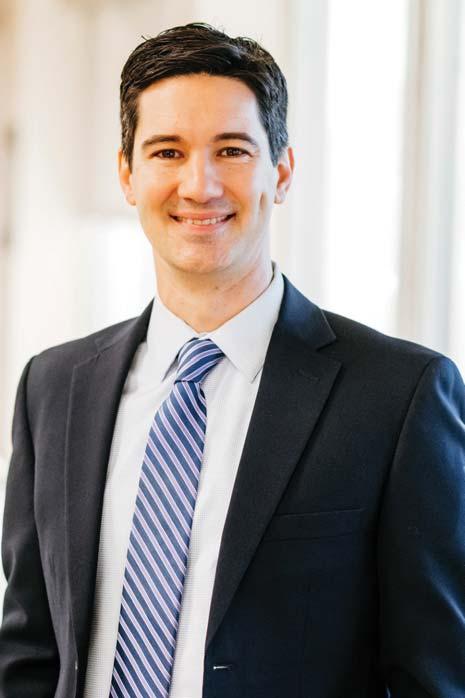
professionals during a time when they’re needed more than ever.
HOW WILL THIS FACILITY FOSTER INTERDISCIPLINARY COLLABORATION IN THE HEALTH AND WELLNESS EDUCATIONAL PROGRAMS? The beauty of this new facility is its intentional inclusion of academic, administrative, and clinical departments from multiple divisions and disciplines all under one roof.
This proximity will allow for transdisciplinary collaboration that may not have occurred as quickly or naturally.
HOW DOES THIS FACILITY BETTER EQUIP STUDENTS FOR FUTURE CAREERS IN HEALTHCARE?
The future of healthcare undoubtedly requires practitioners who are wellversed in using technology and equipment. The resources available in this
building will allow students to train using the most current instrumentation in their respective fields. Healthcare also needs students who welcome the opportunity to work across disciplines, are cross-culturally competent, and are innovative and nimble in nature.
–E.M.W.
HEADSHOT
COURTESY TK TK
PHOTOGRAPHS COURTESY (TOP) MIAMI UNIVERSITY / (BOTTOM) SPRINGER SCHOOL AND CENTER FALL 2023 REALM 51

PHOTO ESSAY 52 REALM FALL 2023
PYRAMID HILL IS A PINNACLE EXPERIENCE
Butler County’s 300-acre outdoor sculpture park is both larger than life and a hidden gem.
 –SARAH McCOSHAM
–SARAH McCOSHAM
FALL 2023 REALM 53
PHOTOGRAPHS BY MARLENE ROUNDS
NOW YOU SEE IT
Pyramid Hill is a study in contradictions. It’s a largerthan-life sculpture park, yet it’s also a hidden gem. It’s an indoor art museum that houses ancient artworks and outdoor sculpture park that’s an homage to all things modern and postmodern. It hosts a dazzling, multimedia, boundary-pushing lights show and a classic art fair featuring humble local makers and artisans.

SPACE TO SPREAD OUT
The park gets about 50,000 visitors a year, and year-on-year attendance continues to grow. “We got a large influx of visitors during COVID because our park stretches over 300 acres, so there’s plenty of space to spread out and enjoy all the art and nature,” says Marketing Manager Delaney French. “The local community enjoys frequent visits to see new contemporary exhibitions, events, or to hike.” Admission is free for members; non-member tickets are $10/adult, $5/children 6-12, and free for kids 5 and under.
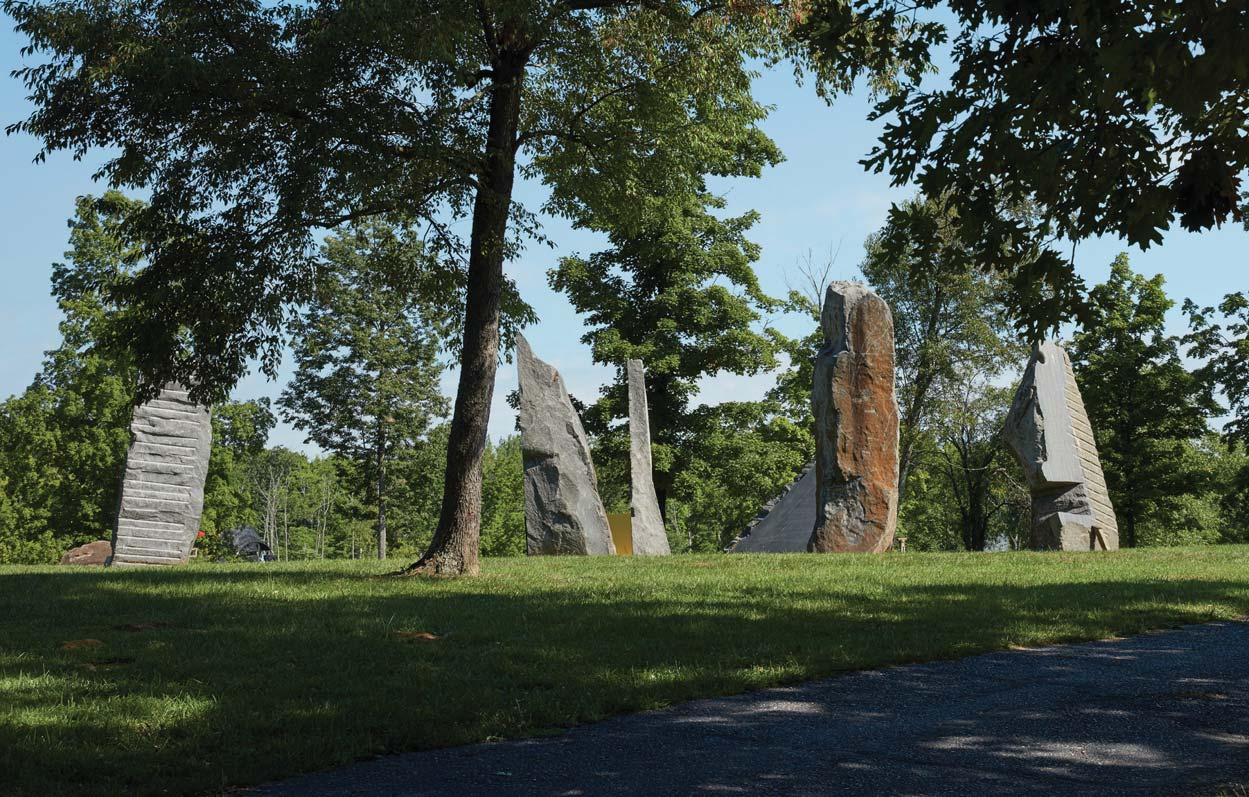
PLEASE TOUCH
Certain installations invite guests to touch, feel, and interact. “Paul” by Martin Gantman is a bold red bench that’s split in the middle, while Jim Tilly’s “Gyro Chair II” is a spinning seat that’s a whirling good time for the young (and young at heart). Jon Isherwood’s “The Age of Stone” (top) is Butler County’s very own Stonehenge.
PHOTO ESSAY
54 REALM FALL 2023
LOCAL CONNECTIONS
Pyramid Hill is marked with 80 larger-than-life sculptures in an environment of meadows, forests, and gardens. Visitors are welcome to stroll around on two feet, though if you want to cover all 300 acres, don’t hesitate to commission an Art Cart. Pyramid Hill is the only museum that offers delightfully rebranded golf carts to use on the grounds.


SIT FOR A SPELL
“The Gates” by John Hock (below) is a provocative piece made from painted steel and incorporates several architectural elements. Guests are welcome to take a rest on its bench-like lower section.



LOOKING BACK, LOOKING AHEAD
Visiting Pyramid Hill is a total sensory experience. Turn off a country road and you’ll find yourself faceto-face with a striking red monument (right middle) that marks the entryway. It can also be a historical experience. Fortified Hill is an earthwork created by the Hopewell people that’s pristine and perfectly preserved. It’s part of continued efforts to transform the park into a place that both honors and expands upon the vision of park founder Henry T. Wilks. “Pyramid Hill is planning a transformation to tell the stories of the land, people, and sculptures before they became part of the park,” says Interim Director Sarah J. Templeton Wilson.

NEW EXPERIENCES
Since art is a dynamic and evolving experience, so too is Pyramid Hill. The park’s annual holiday lights display has transformed into something truly unique over the past several years, and special events keep visitor experiences fresh and new. Looking ahead (or above?), French says the park’s location for 2024’s total lunar eclipse will be celebrated at the Eclipse Watch Party on April 8. “We are welcoming everyone to spread out across our 300 acres for a-once-in-alifetime experience.”

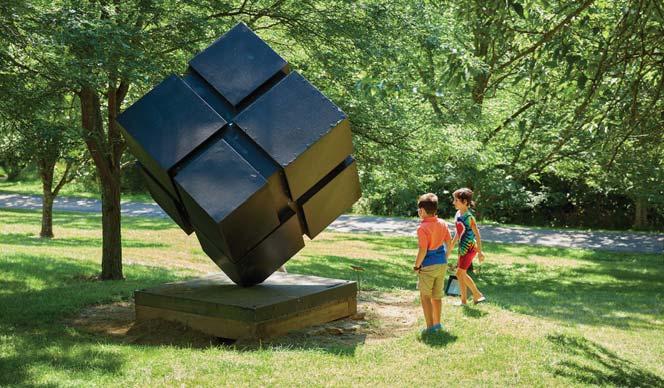
PHOTO ESSAY
56 REALM FALL 2023
ChamberHealth

Announcing a new partnership with Medical Mutual.
In partnership with Medical Mutual, we are offering an expanded ChamberHealth® program to provide you – our members – with premium health insurance coverage while saving you money through group buying power. Through this partnership, we are now able to offer ChamberHealth insurance plans to businesses from 1 to 500 employees in the state of Ohio – an expansion of the program that was previously only available to companies from 2 to 99 employees.
THE BENEFITS
ADDITIONAL PLAN OPTIONS INCLUDE:
• Prescription drug coverage







• Wellness programs
• Identity theft resolution and remediation services are offered at no additional cost









TRADITIONAL COPAY AND HIGH-DEDUCTIBLE PLANS WITH HSA

Through ChamberHealth, small businesses and sole proprietors – a first for the ChamberHealth program – can partake in a self-funded insurance plan. Being self-funded has many benefits, including:

• The ability to keep costs low since MEWAs are not subject to some of the Affordable Care Act’s (ACA) mandated benefits and taxes
• The cost of benefits reflects the unique health of the company and its employees, recognizing that a healthier team should create a better benefits cost outcome
• All benefit options are tied to Medical Mutual’s large network of doctors and hospitals, including TriHealth, the Christ Hospital Health Network, and Mercy Health






DENTAL PLANS

LIFE AND DISABILITY PLANS, INDEMNITY PLANS, AND STOP-LOSS COVERAGE
VISION PLANS

LEARN MORE > cincinnatichamber.com/chamberhealth
*
®
can power your business Writing
At Miami, the Howe Center for Writing Excellence helps all students — regardless of their major — become effective communicators.

A national leader for more than 25 years, the Howe Center knows that the skills that people develop to become strong writers are the same skills that they need to collaborate with others, express creativity, and analyze data.
That’s why Miami produces graduates who can write powerfully and make your organization better. FOR EVERY POSITION. IN EVERY FIELD. Making
a writer MiamiOH.edu/Howe-Center
everyone





















































































































 ThompsonHine.com
Kris Brandenburg* Stephen M. King Dean Spoor Jeremy D’Abreau *Member, 2024 LEAD Clermont Community Leadership Program
ThompsonHine.com
Kris Brandenburg* Stephen M. King Dean Spoor Jeremy D’Abreau *Member, 2024 LEAD Clermont Community Leadership Program




























































































































 EDITED BY JOHN FOX
EDITED BY JOHN FOX








 –SARAH McCOSHAM
–SARAH McCOSHAM




































